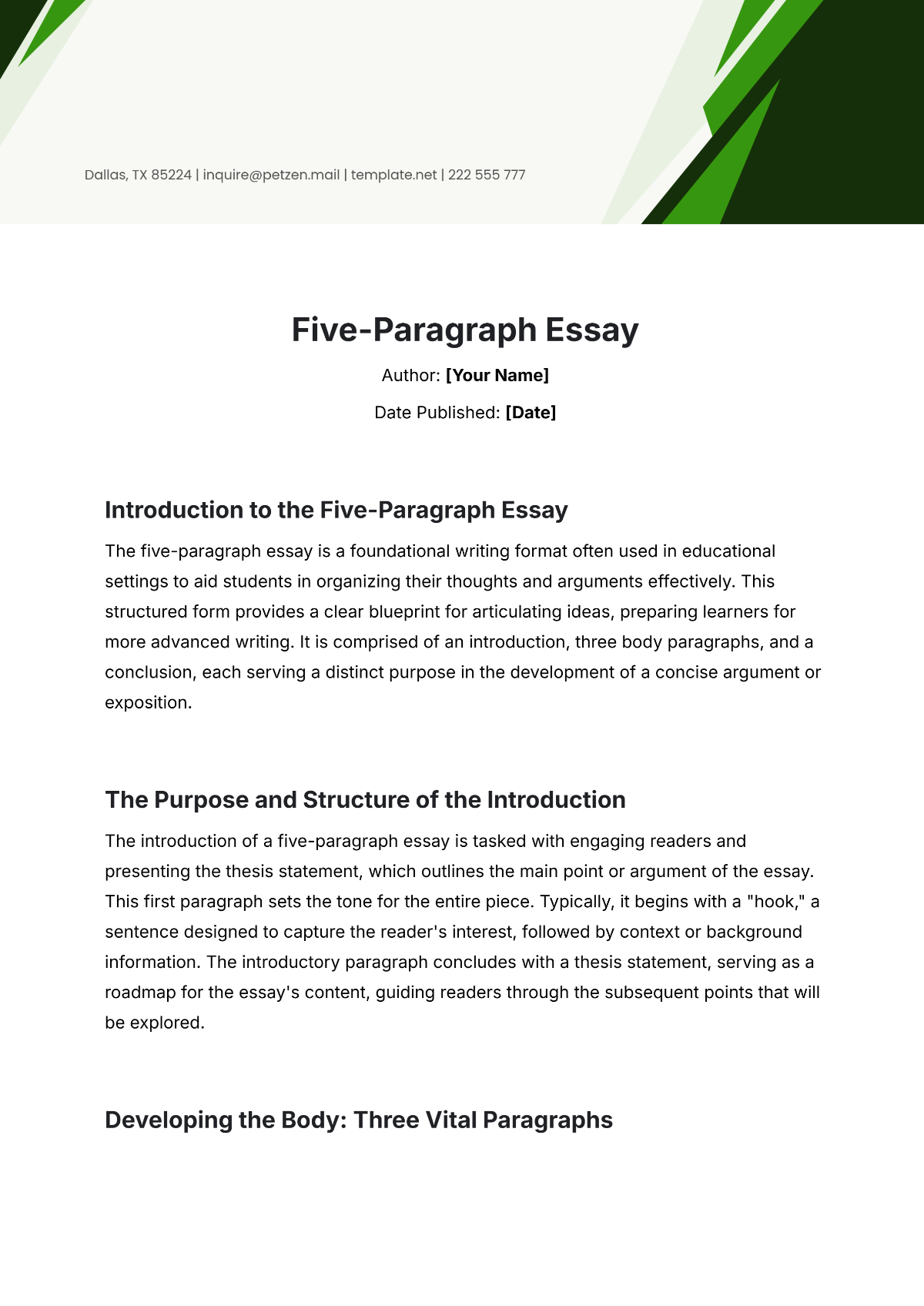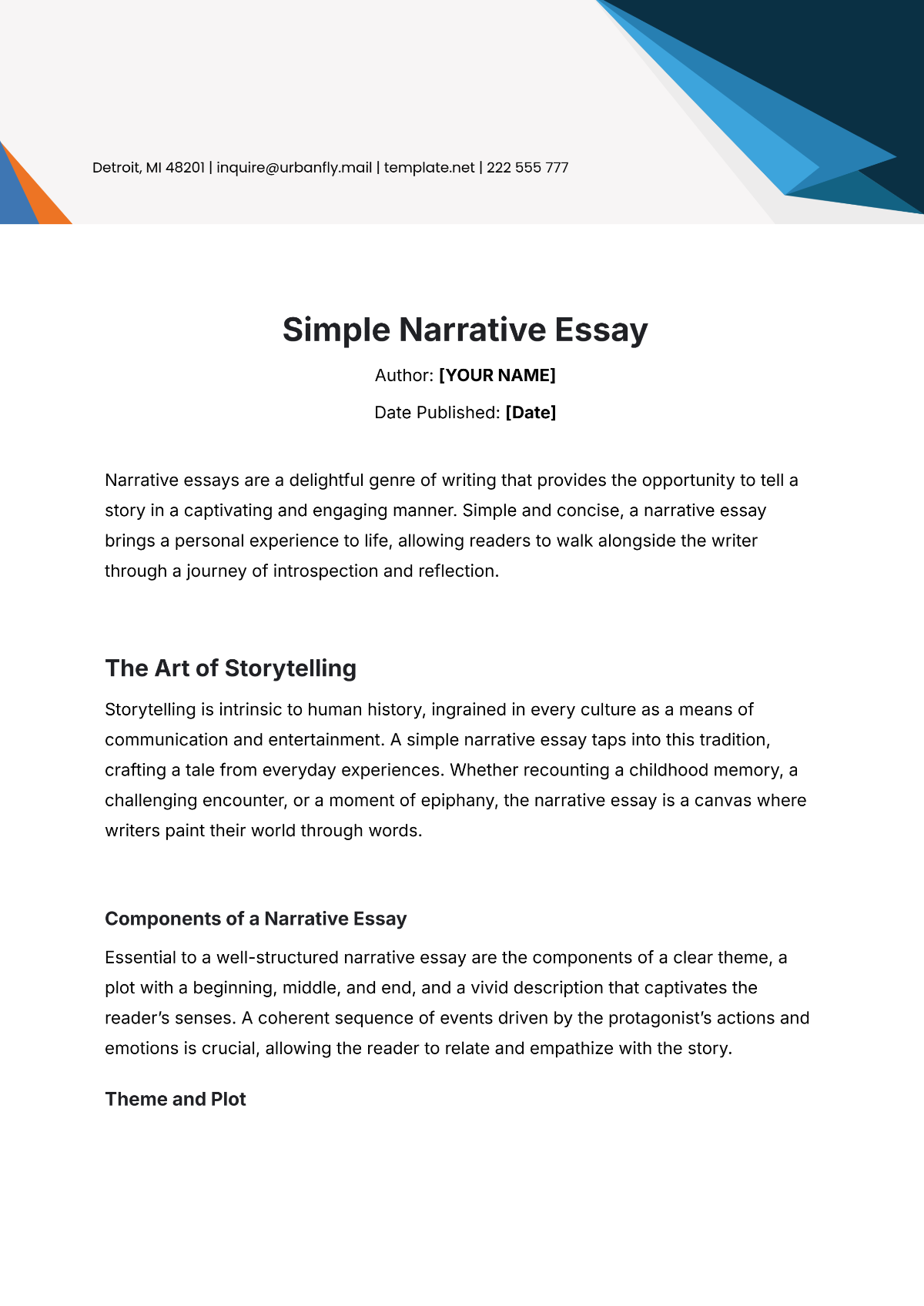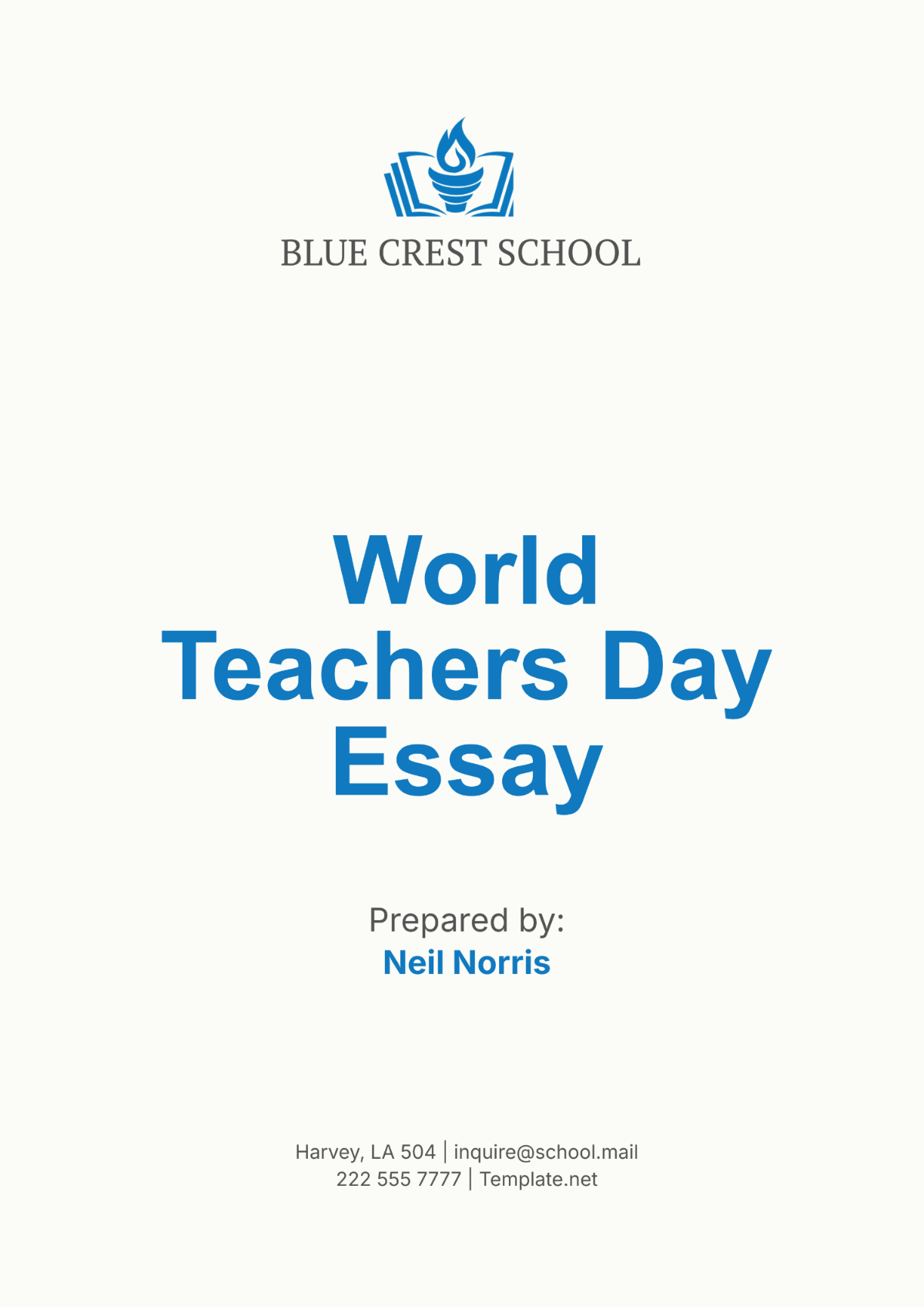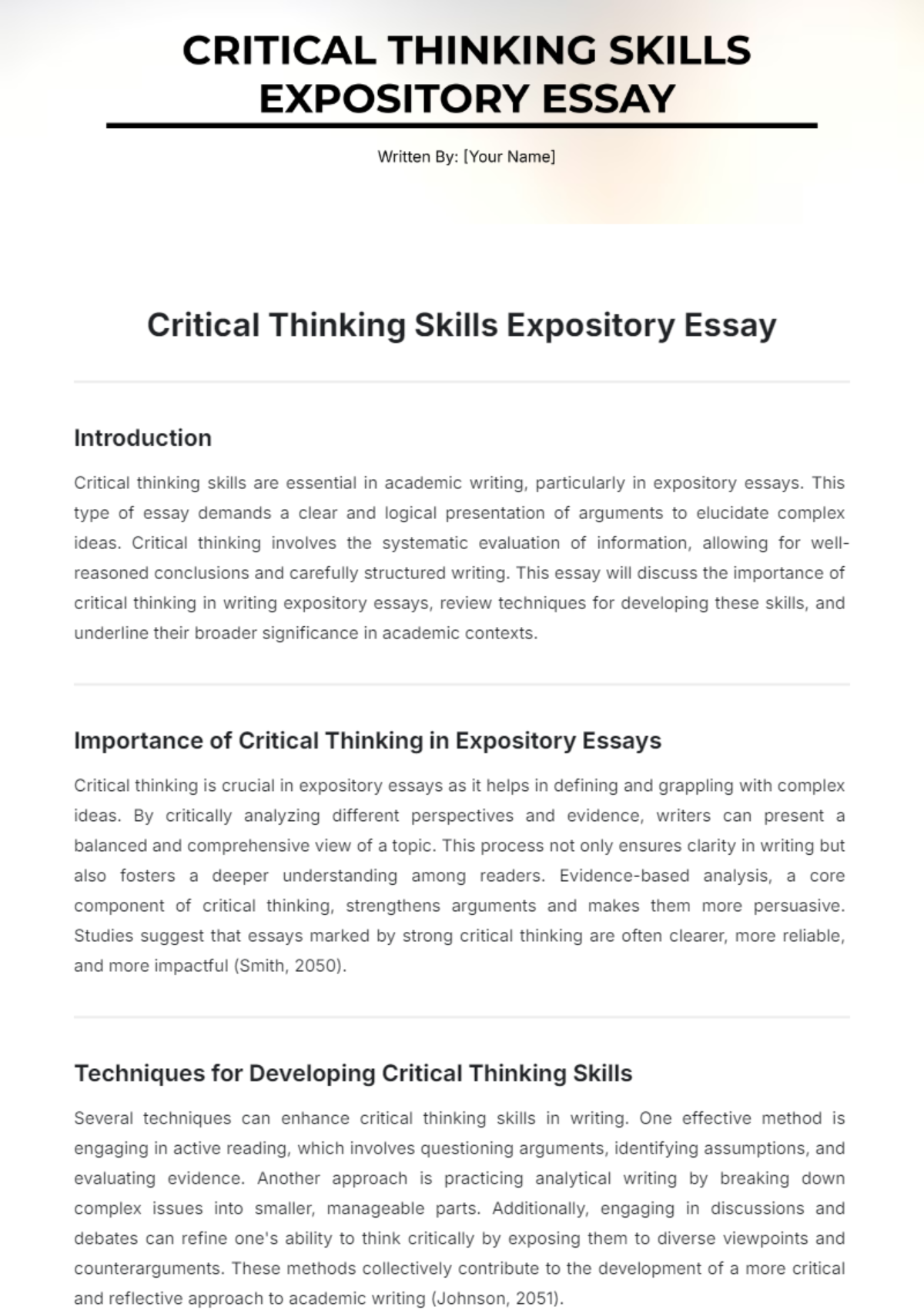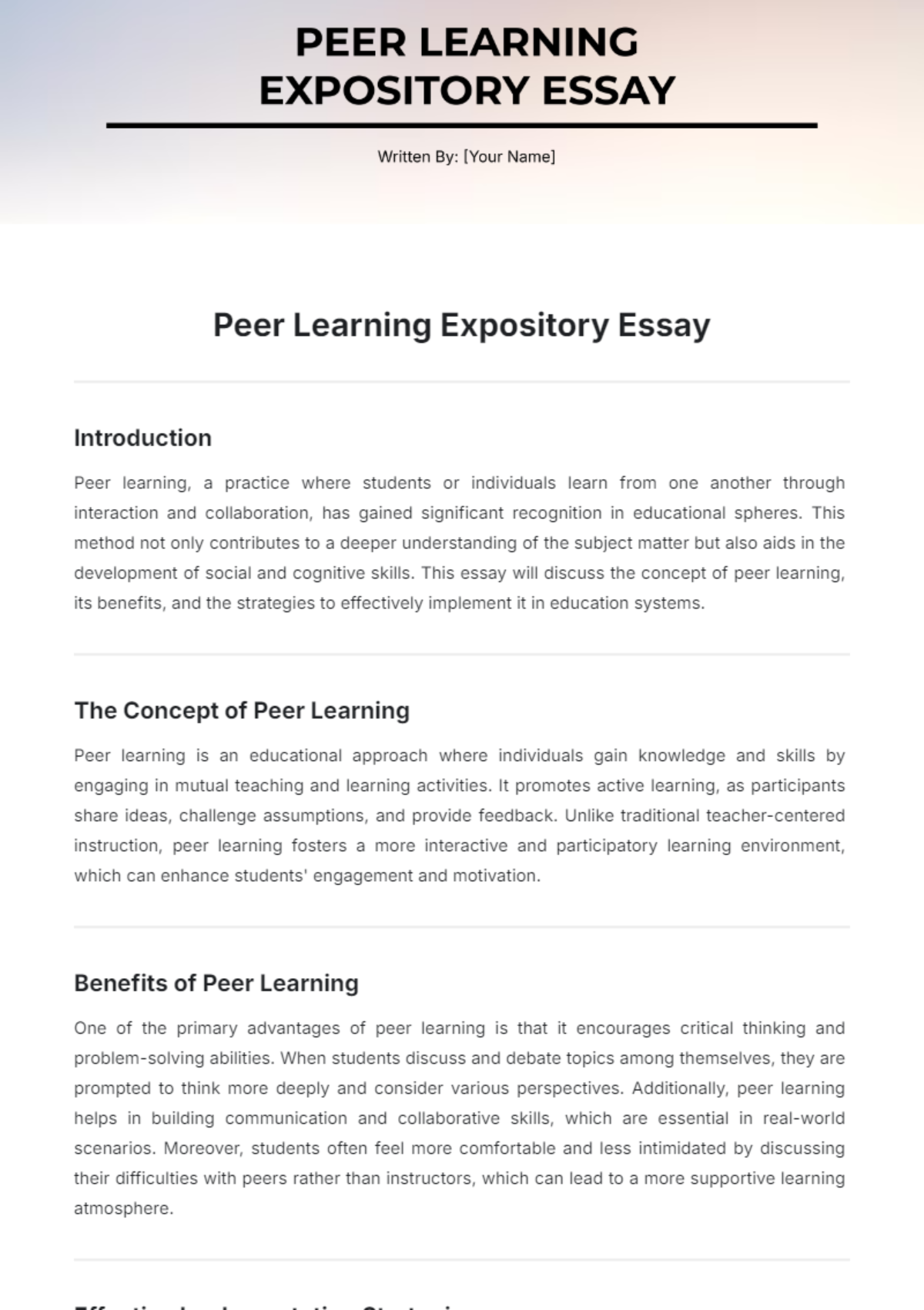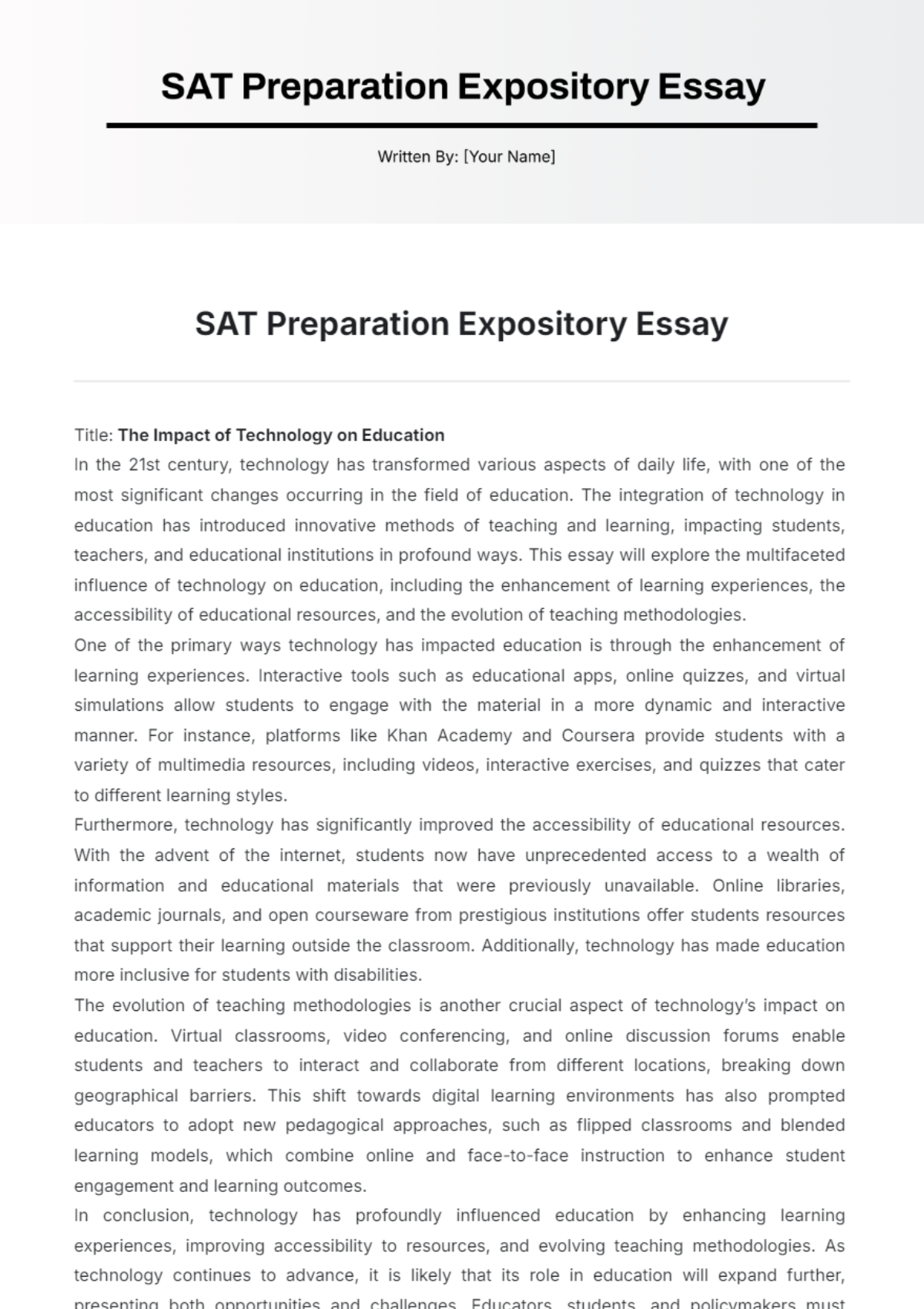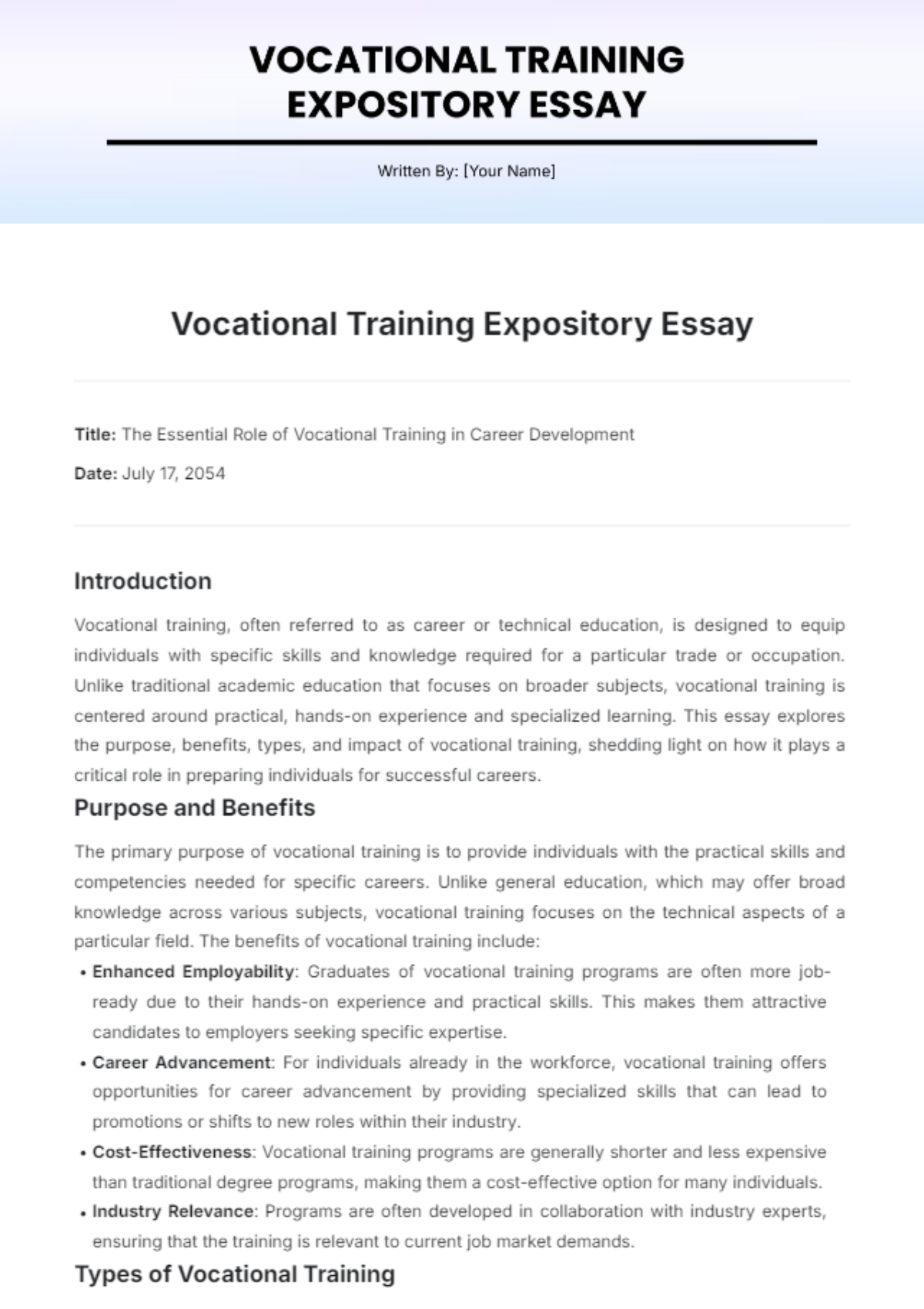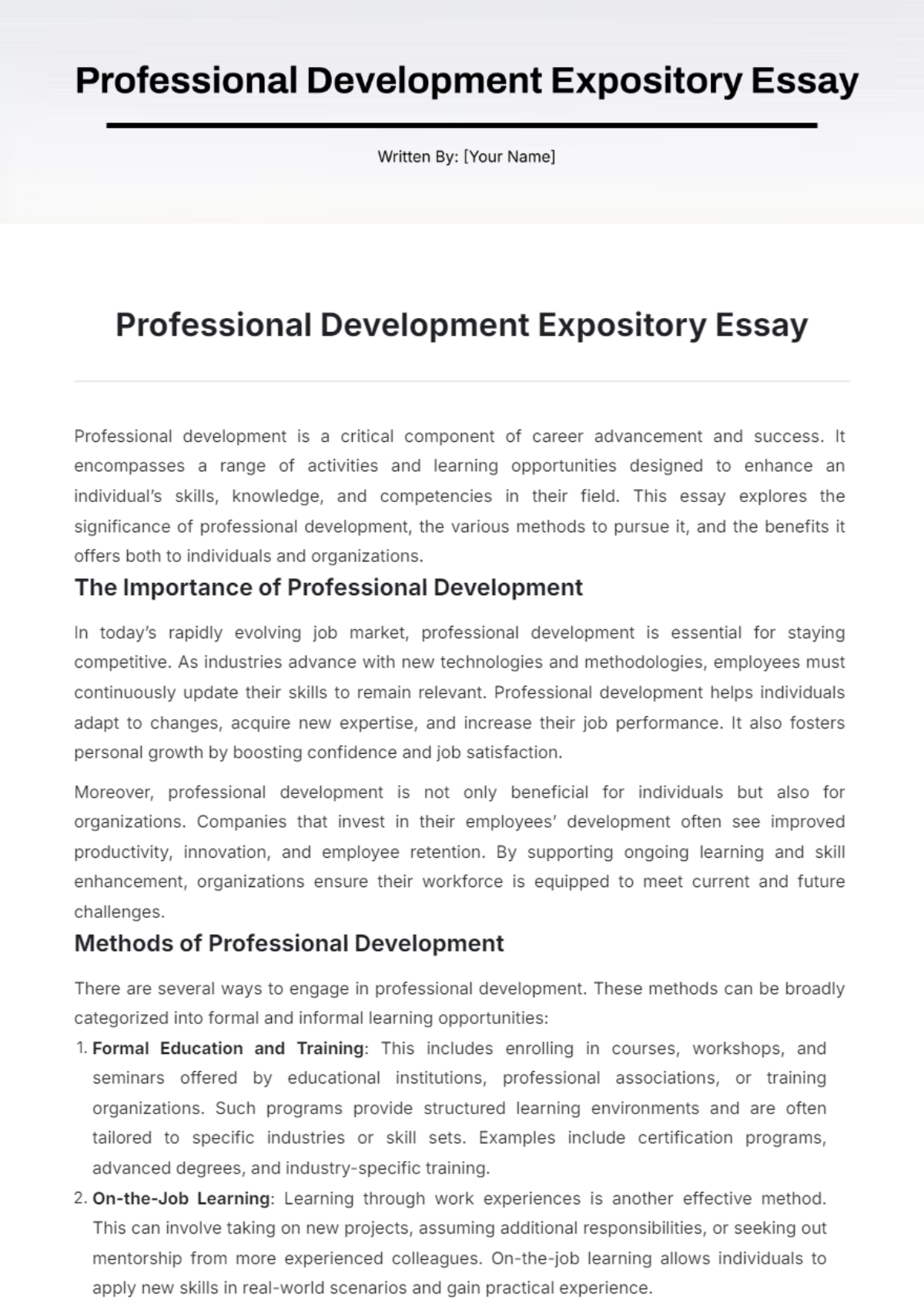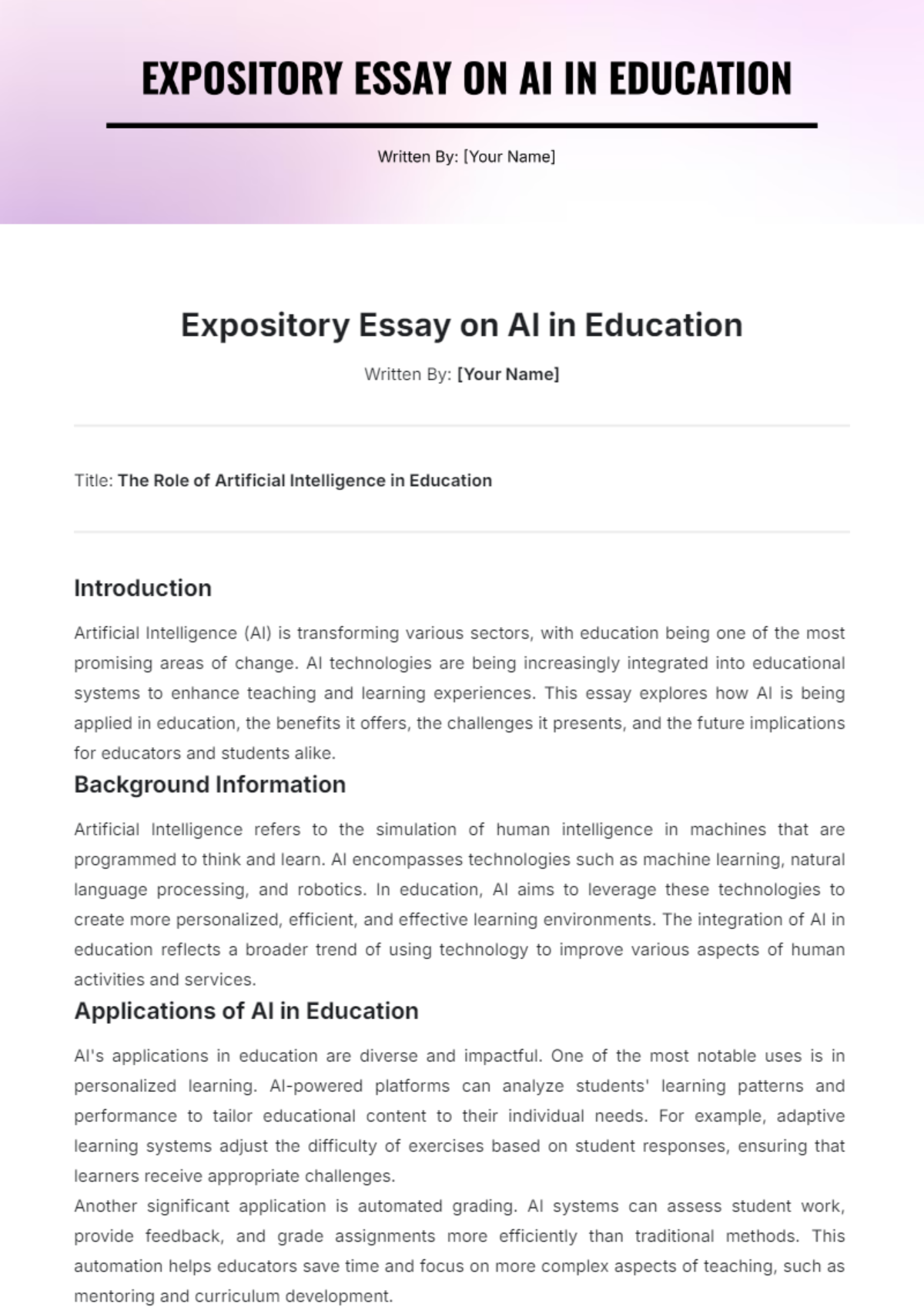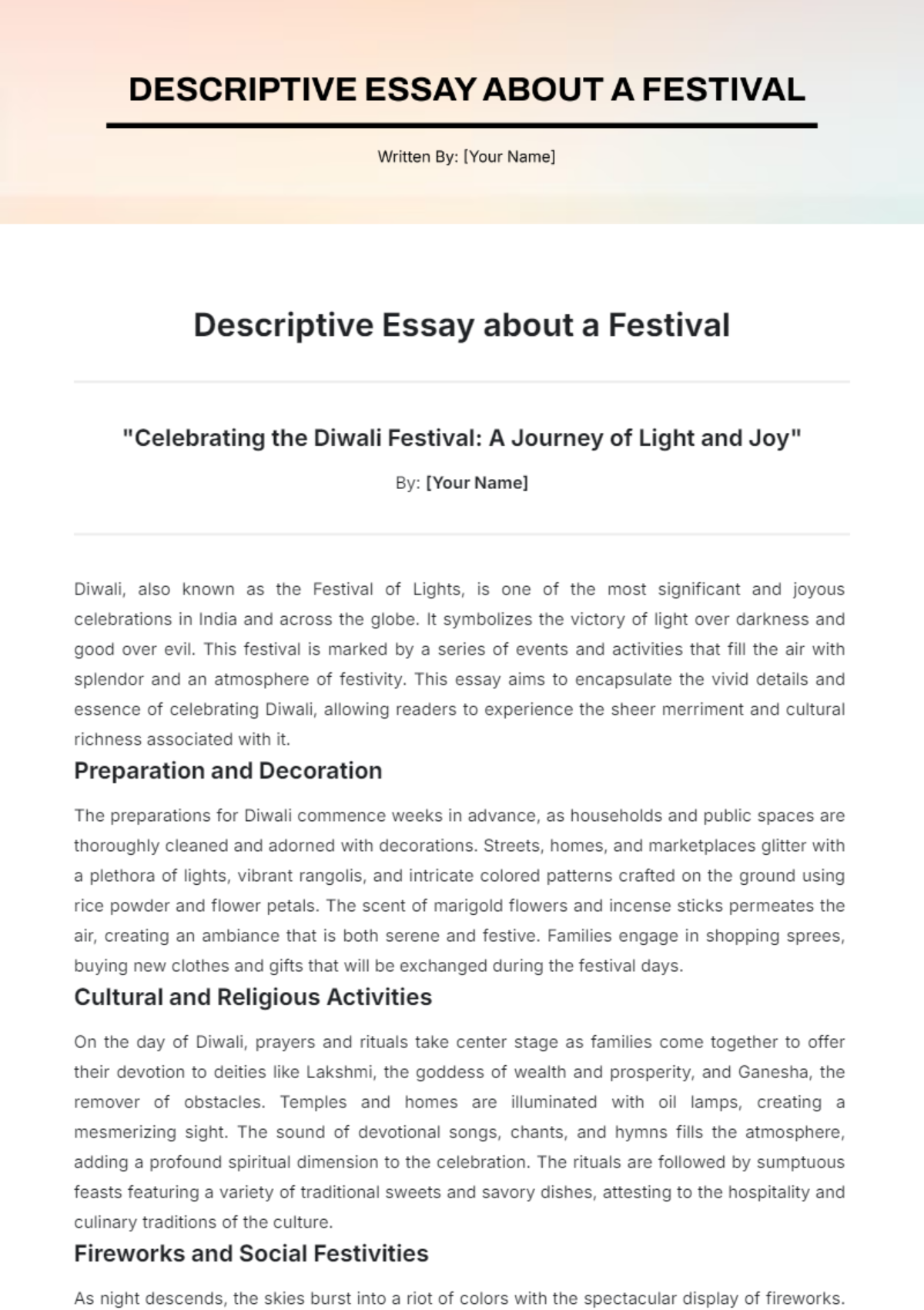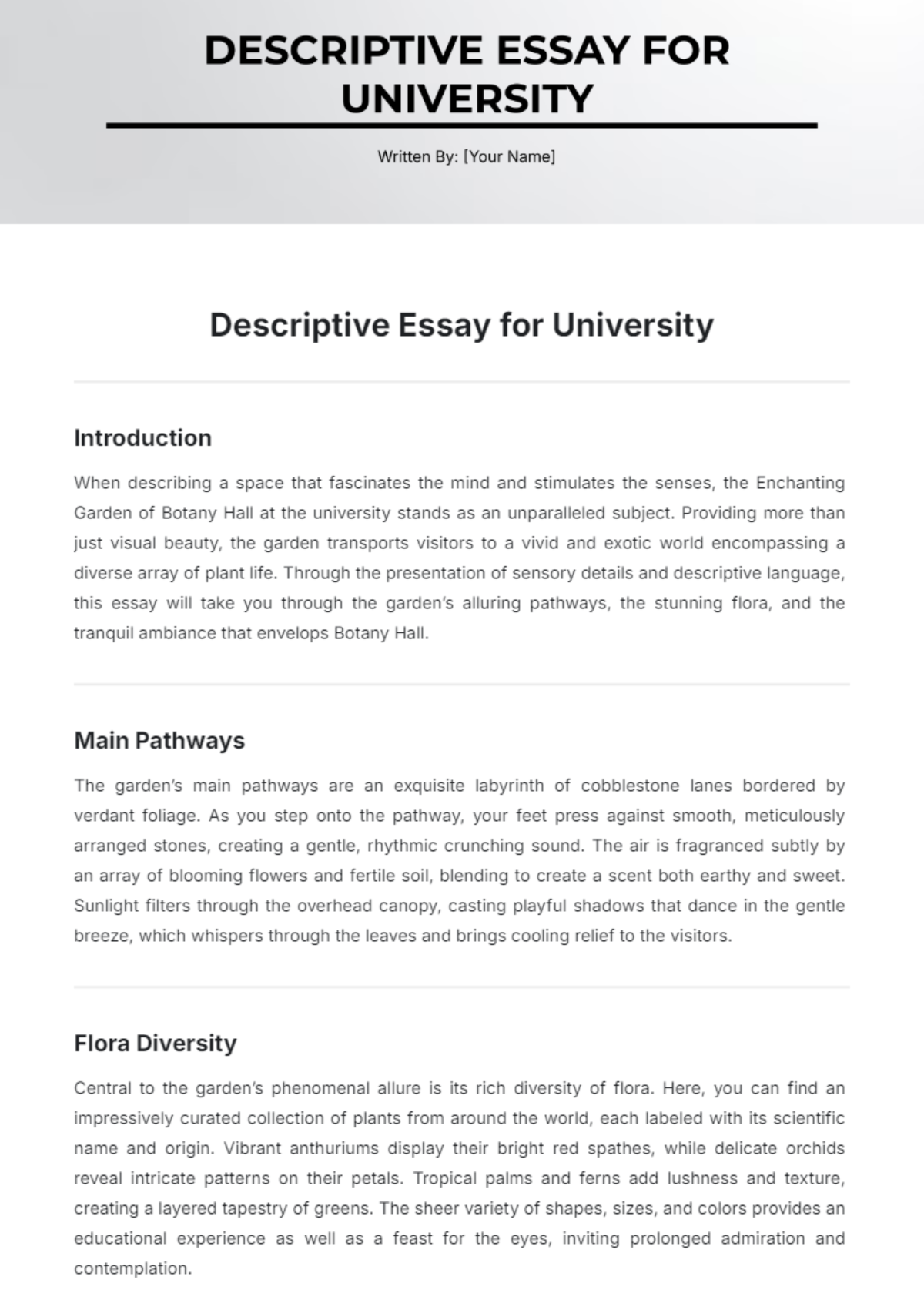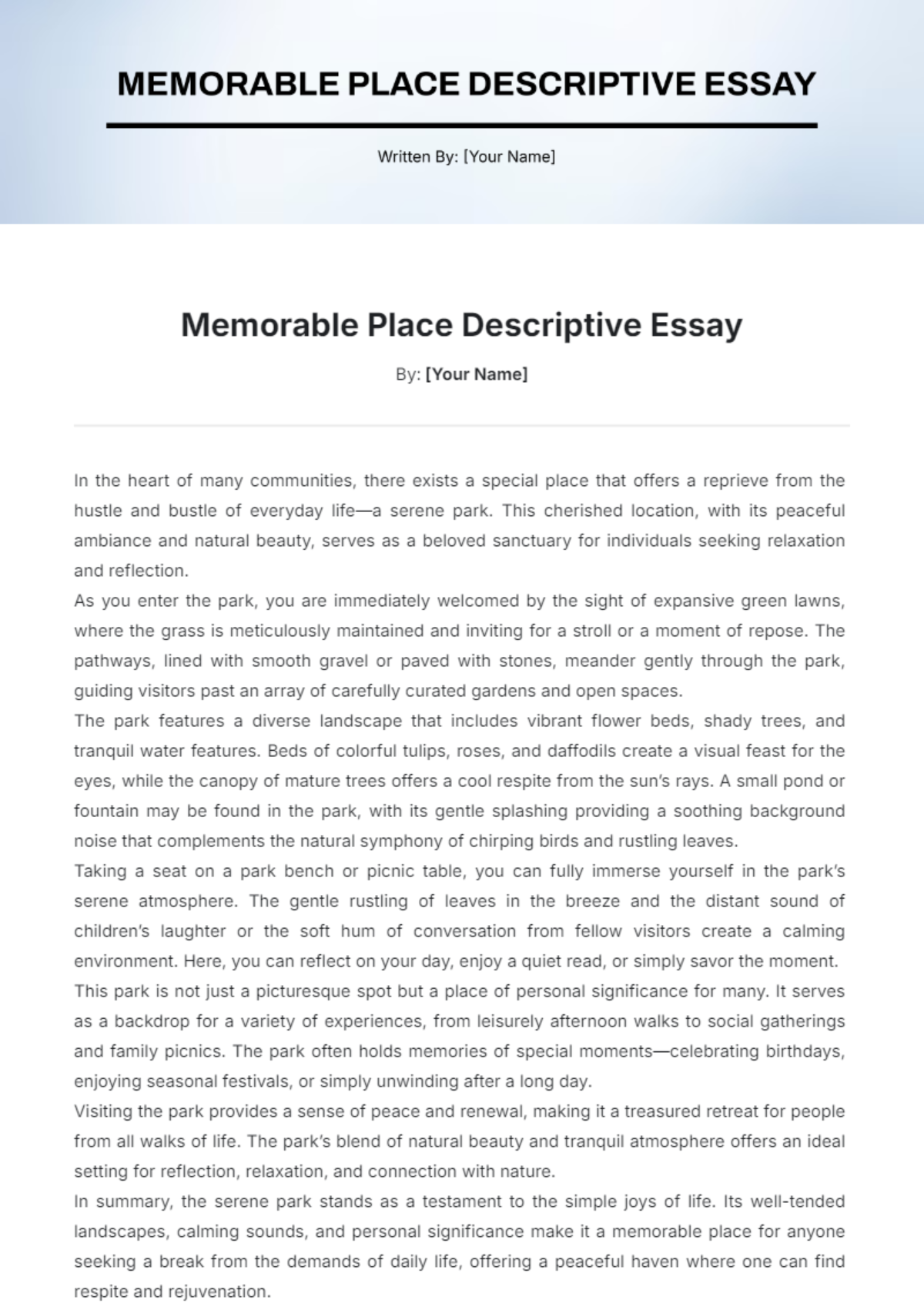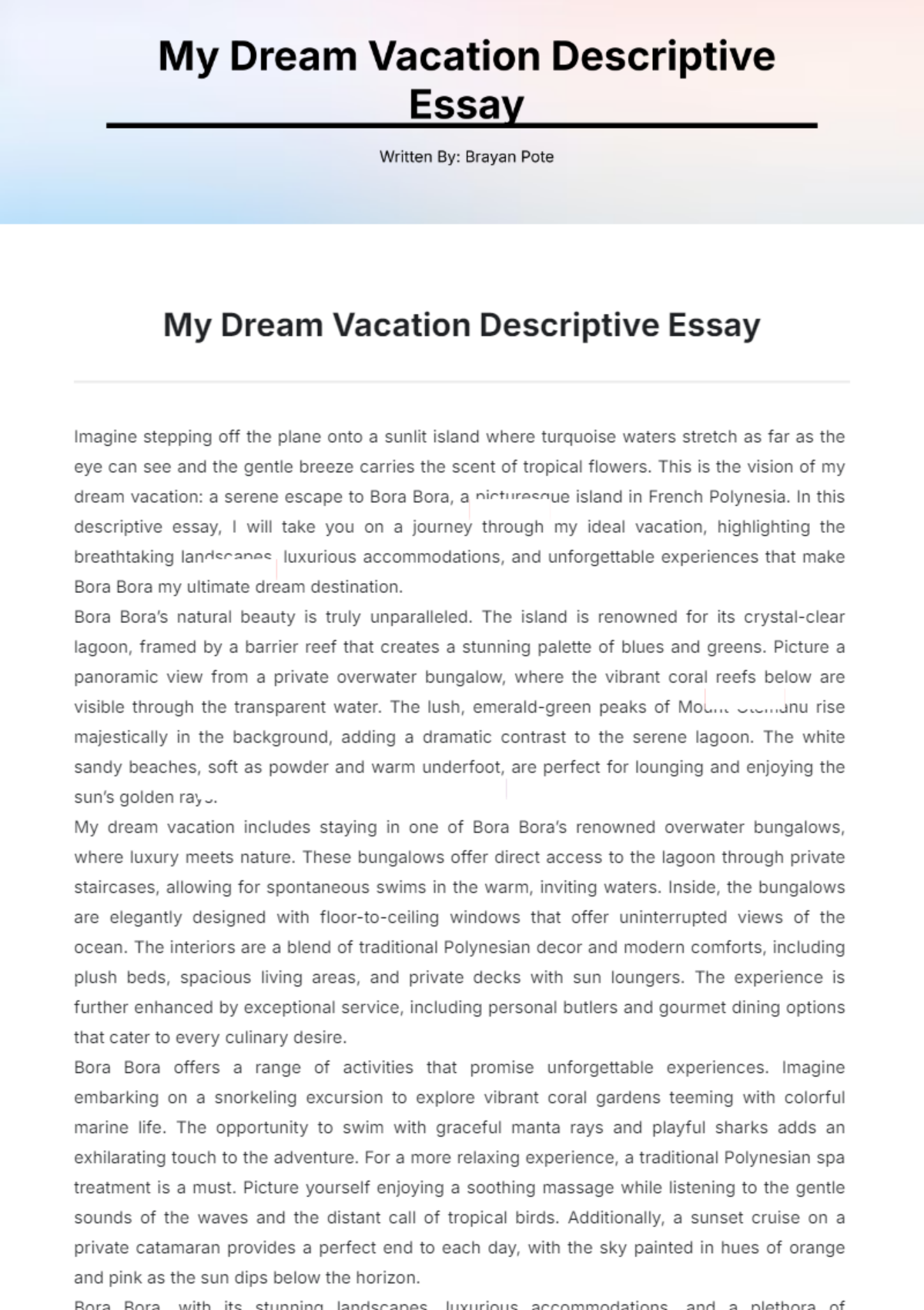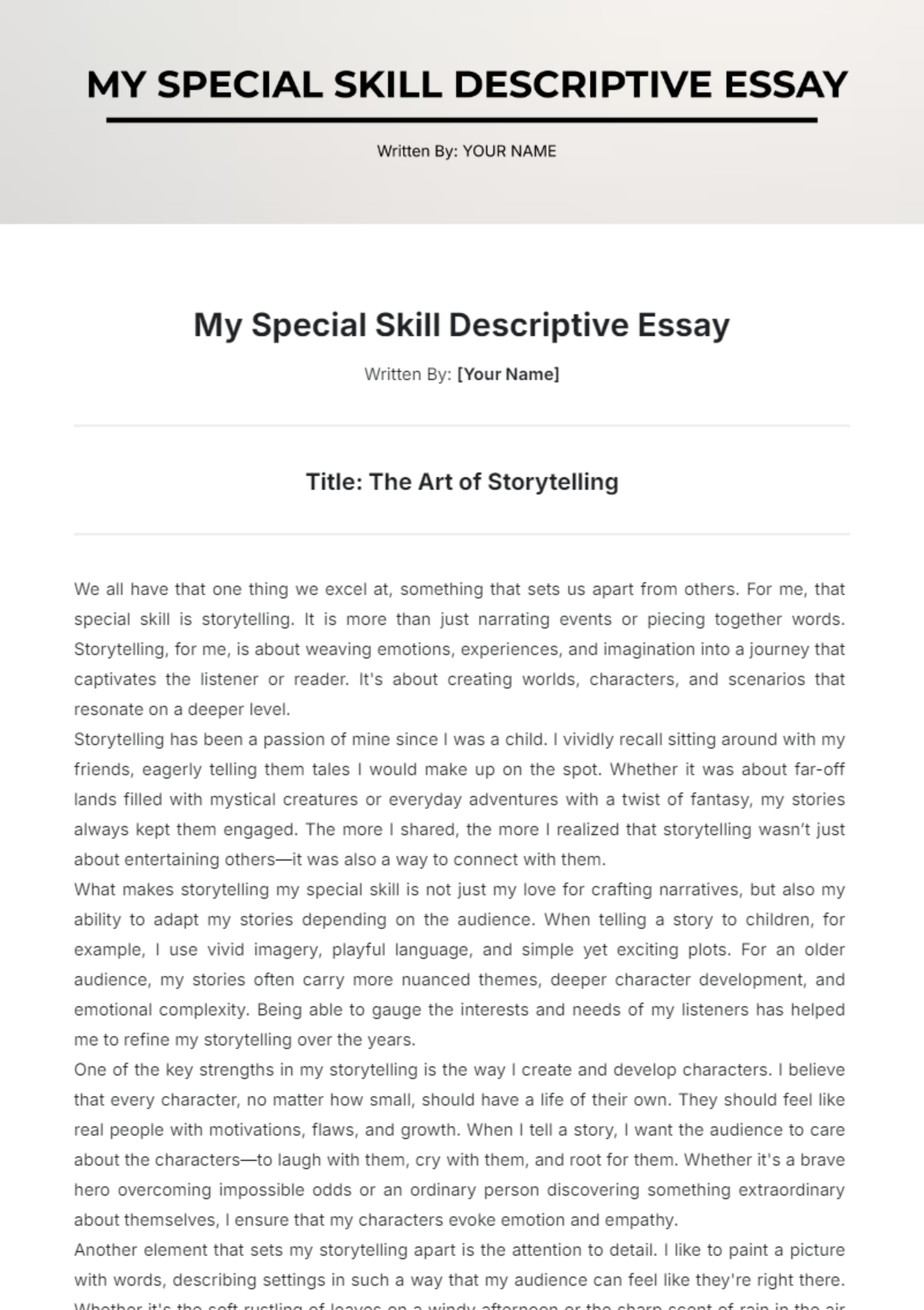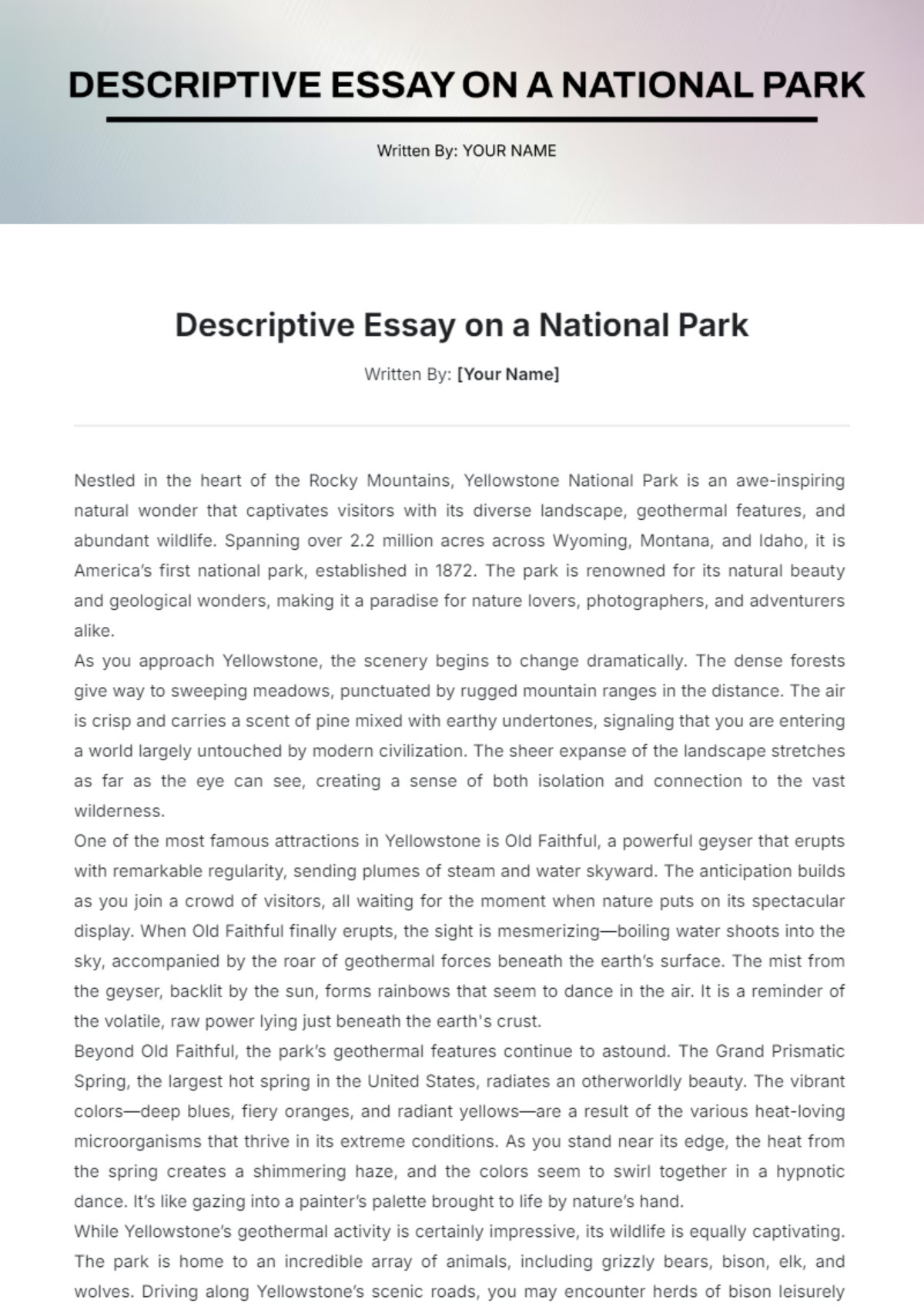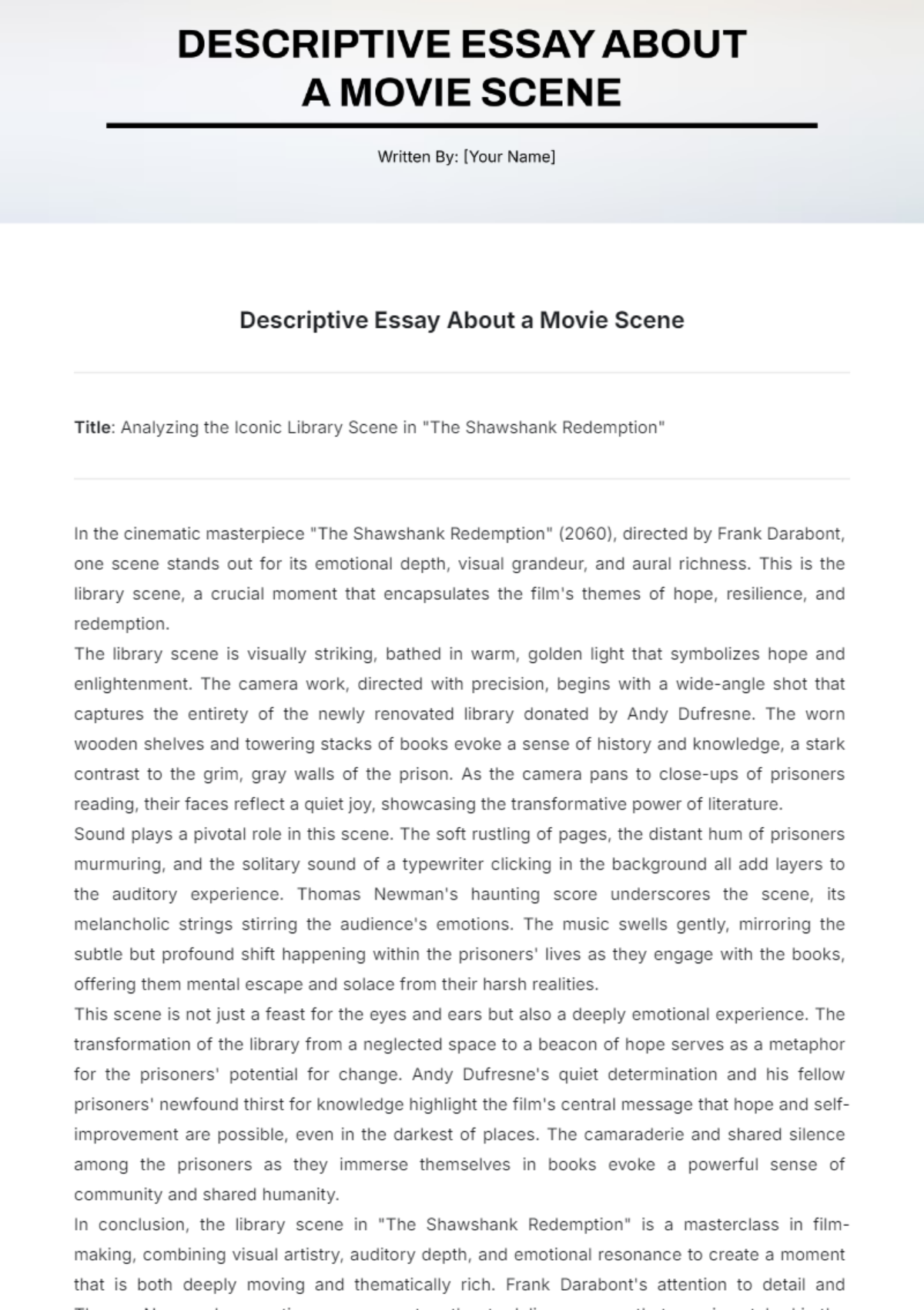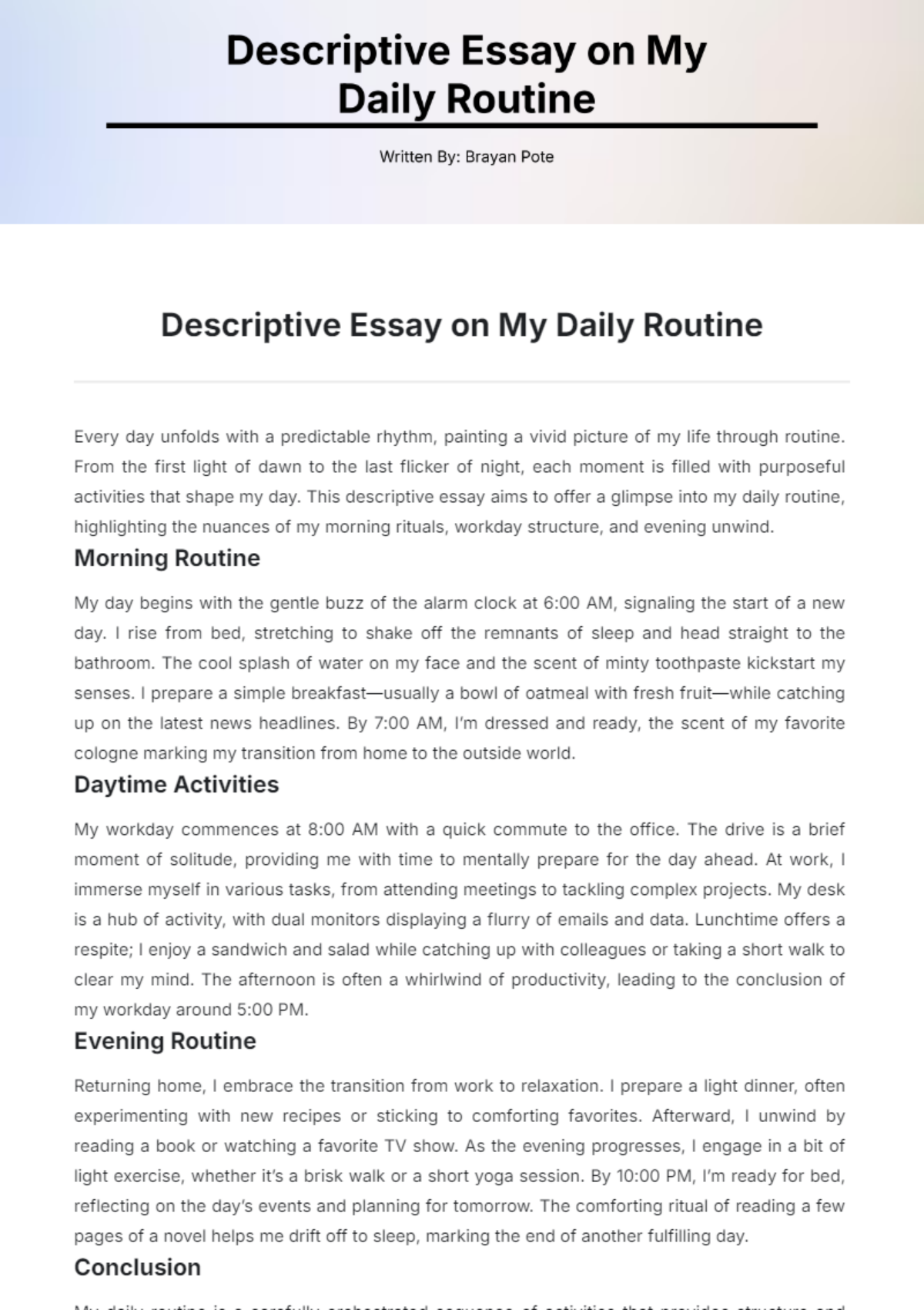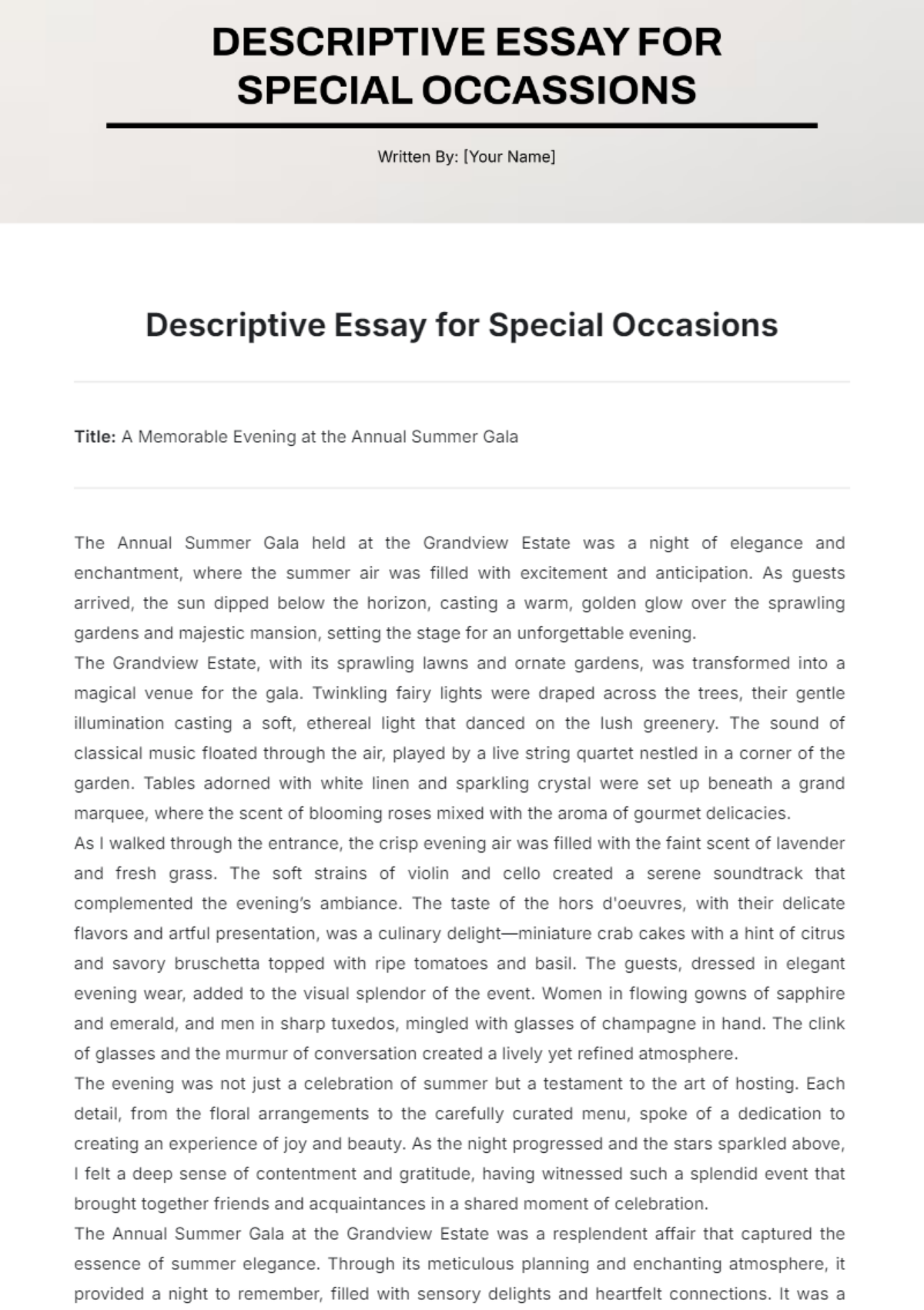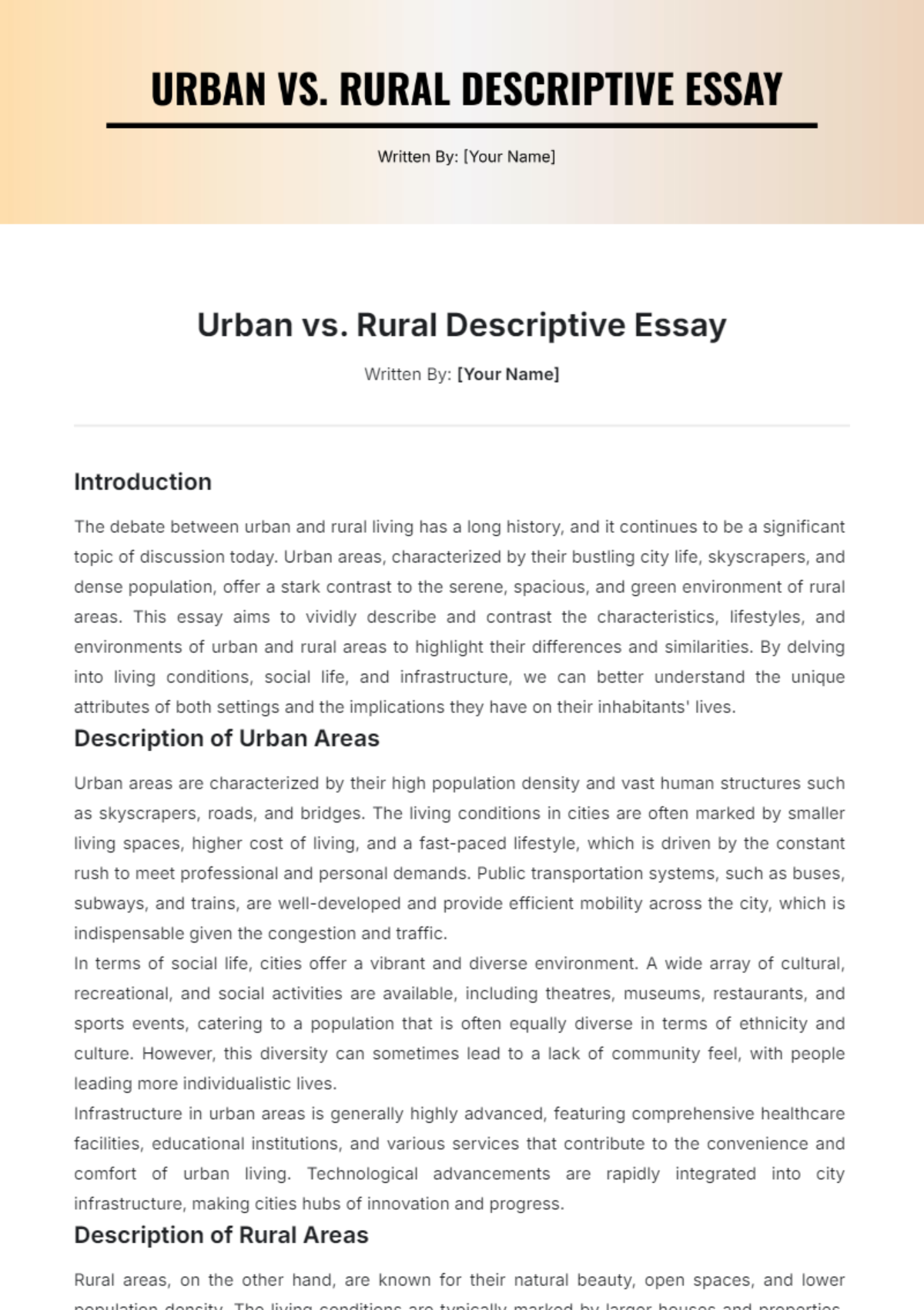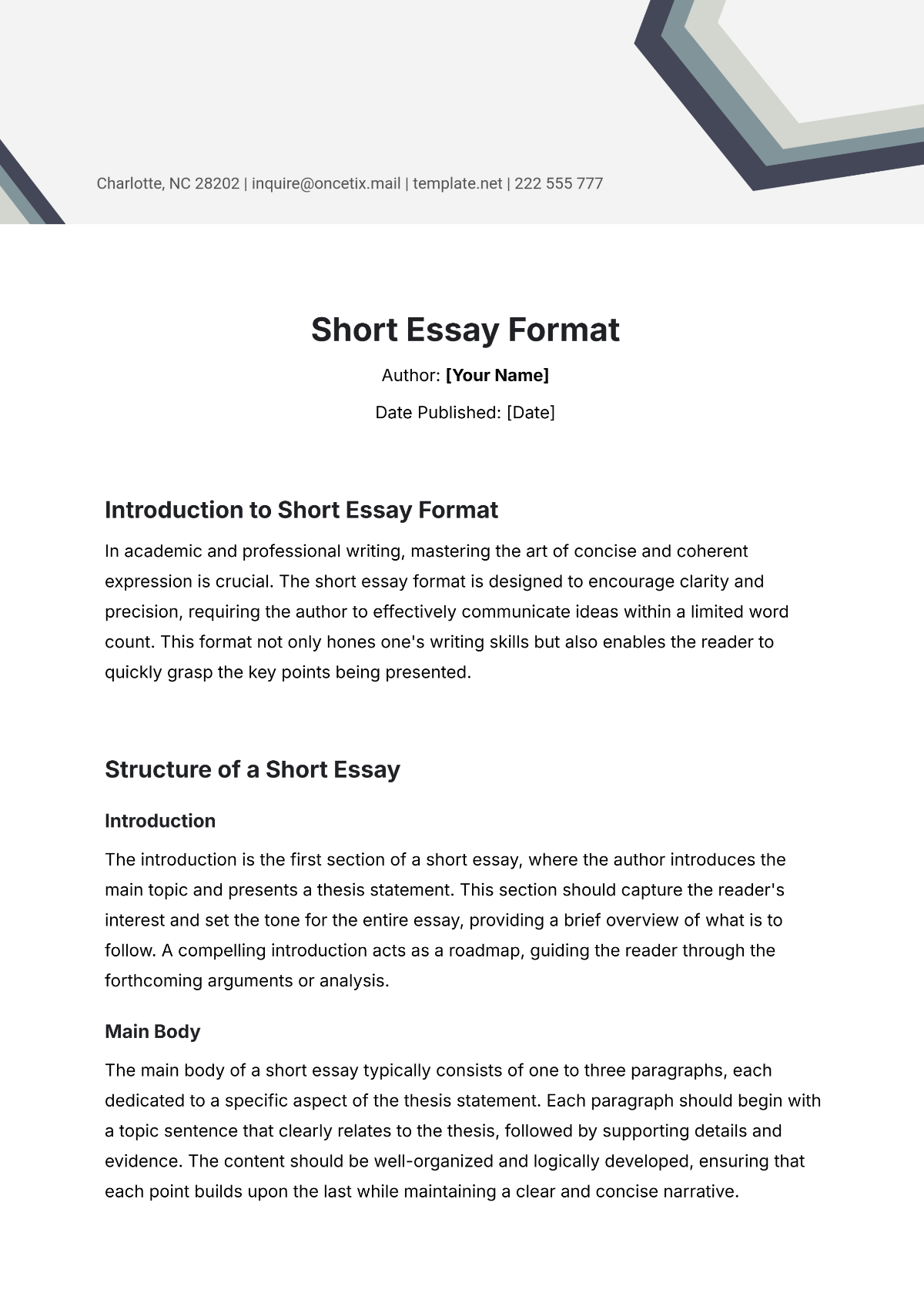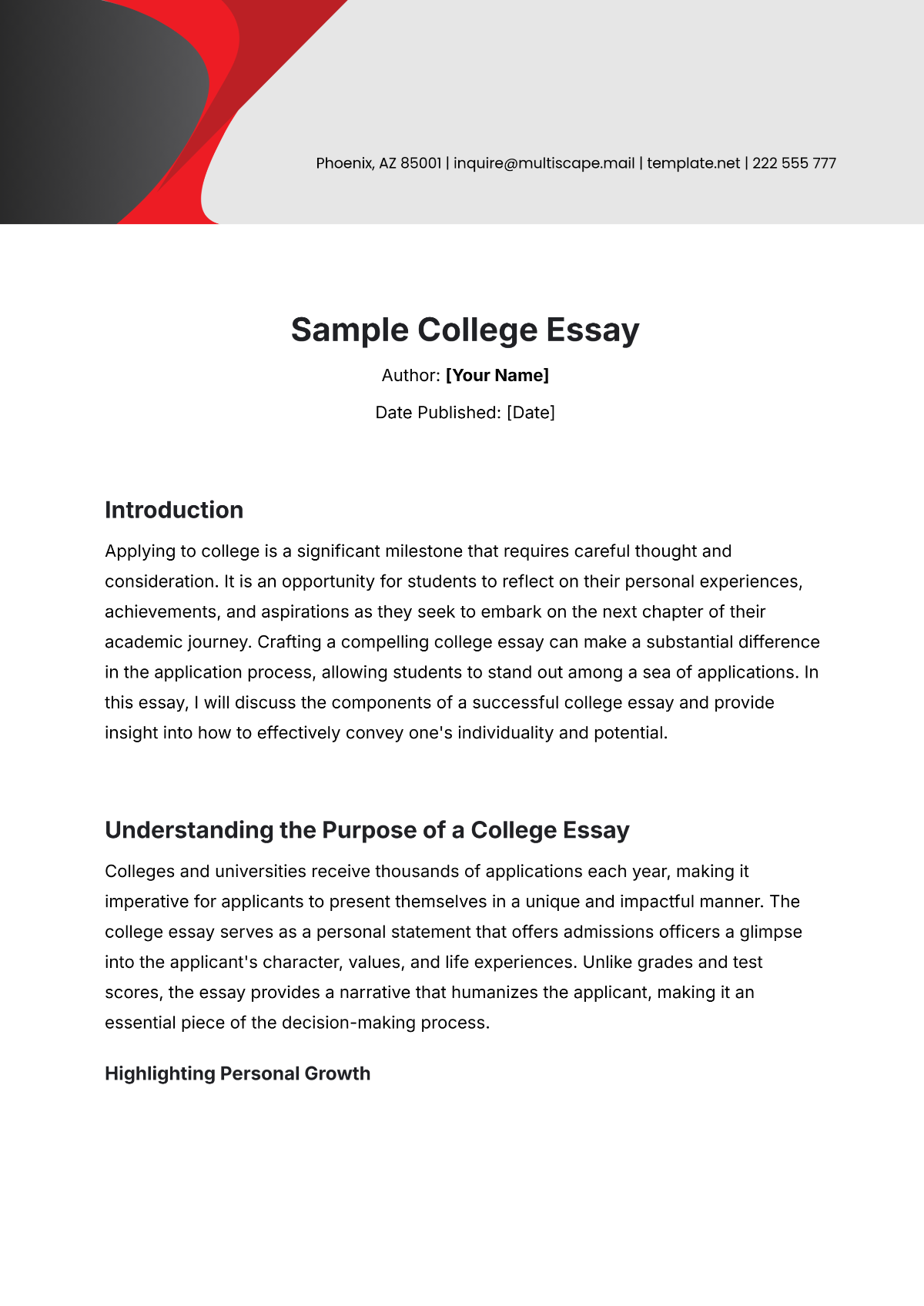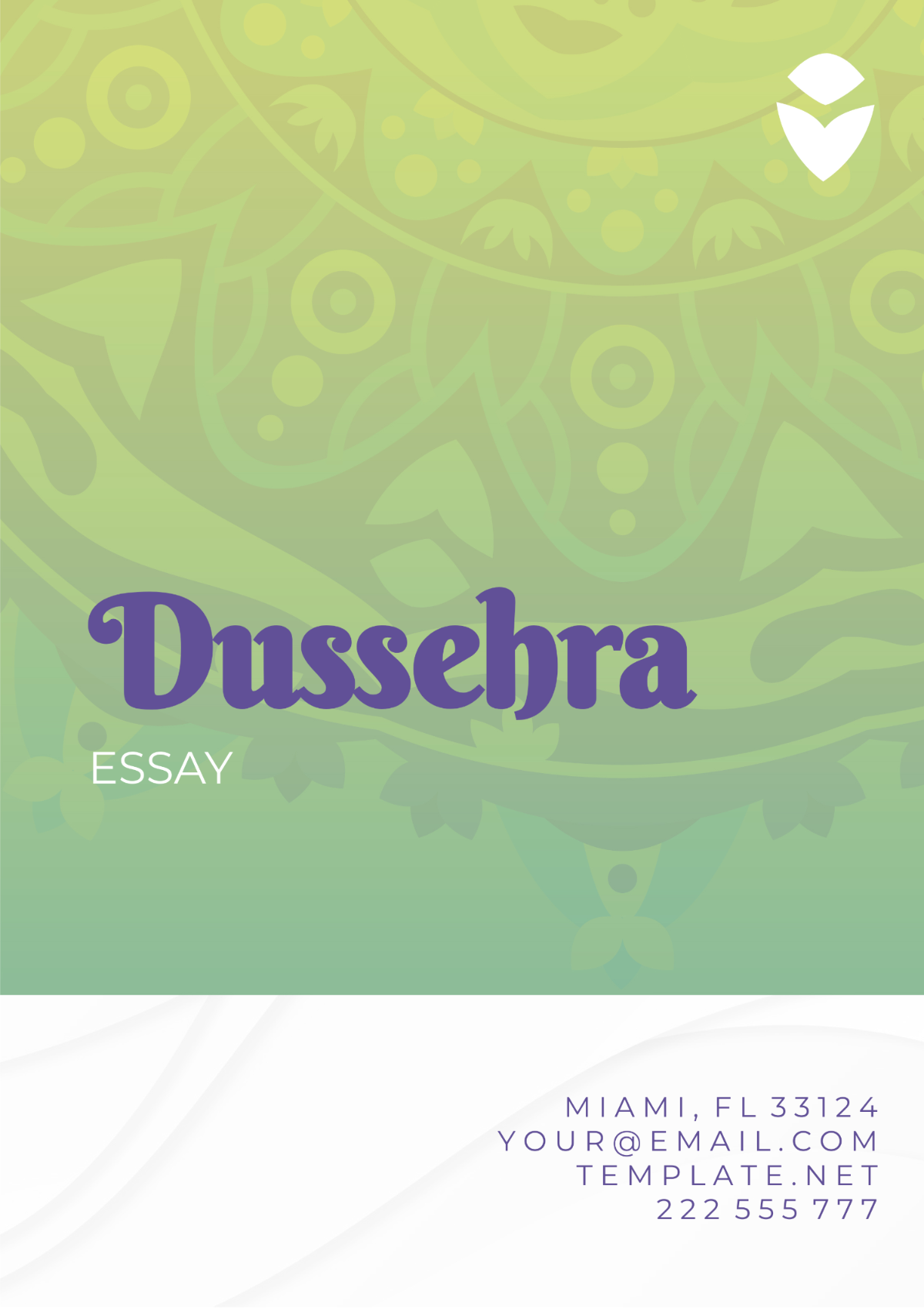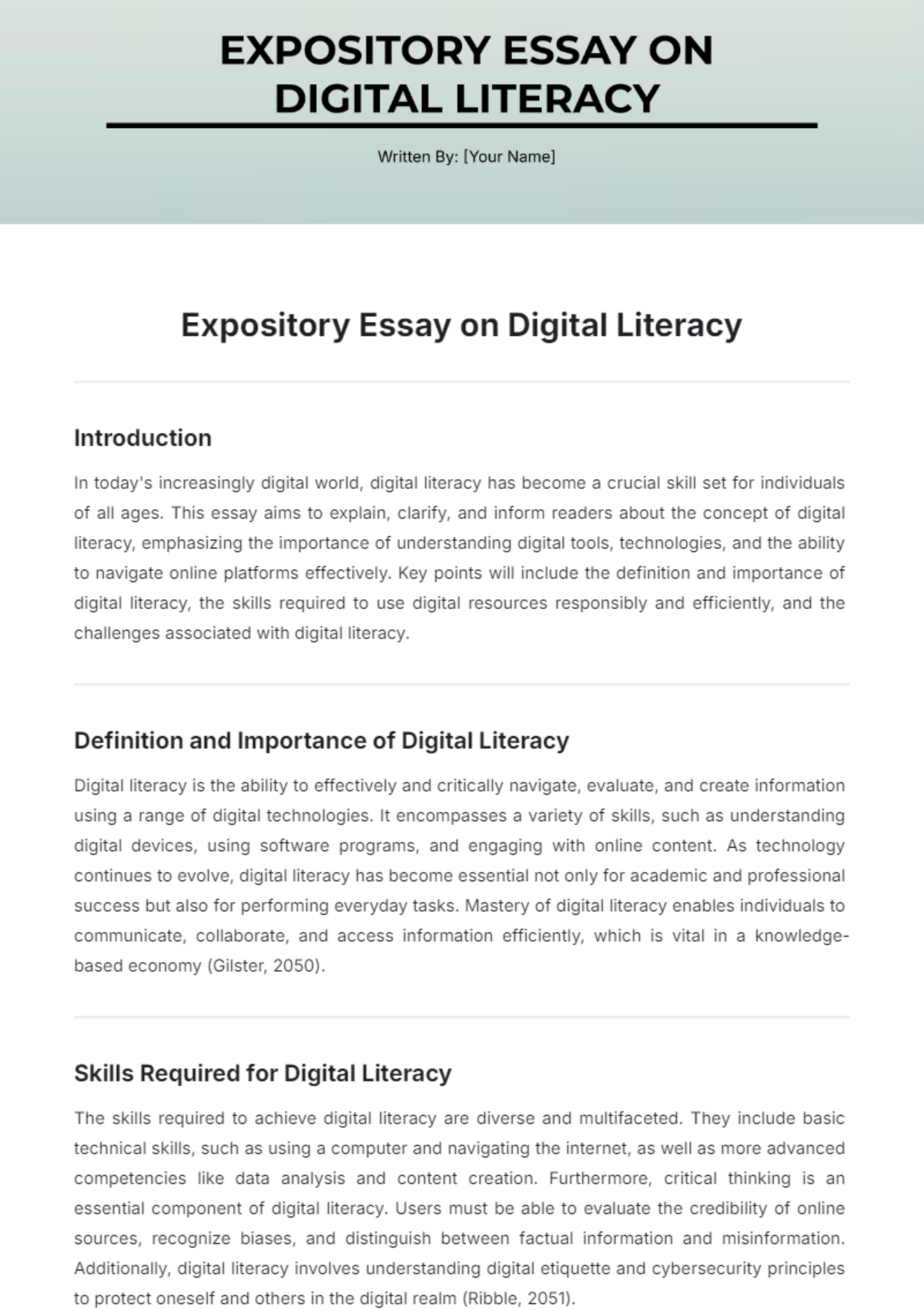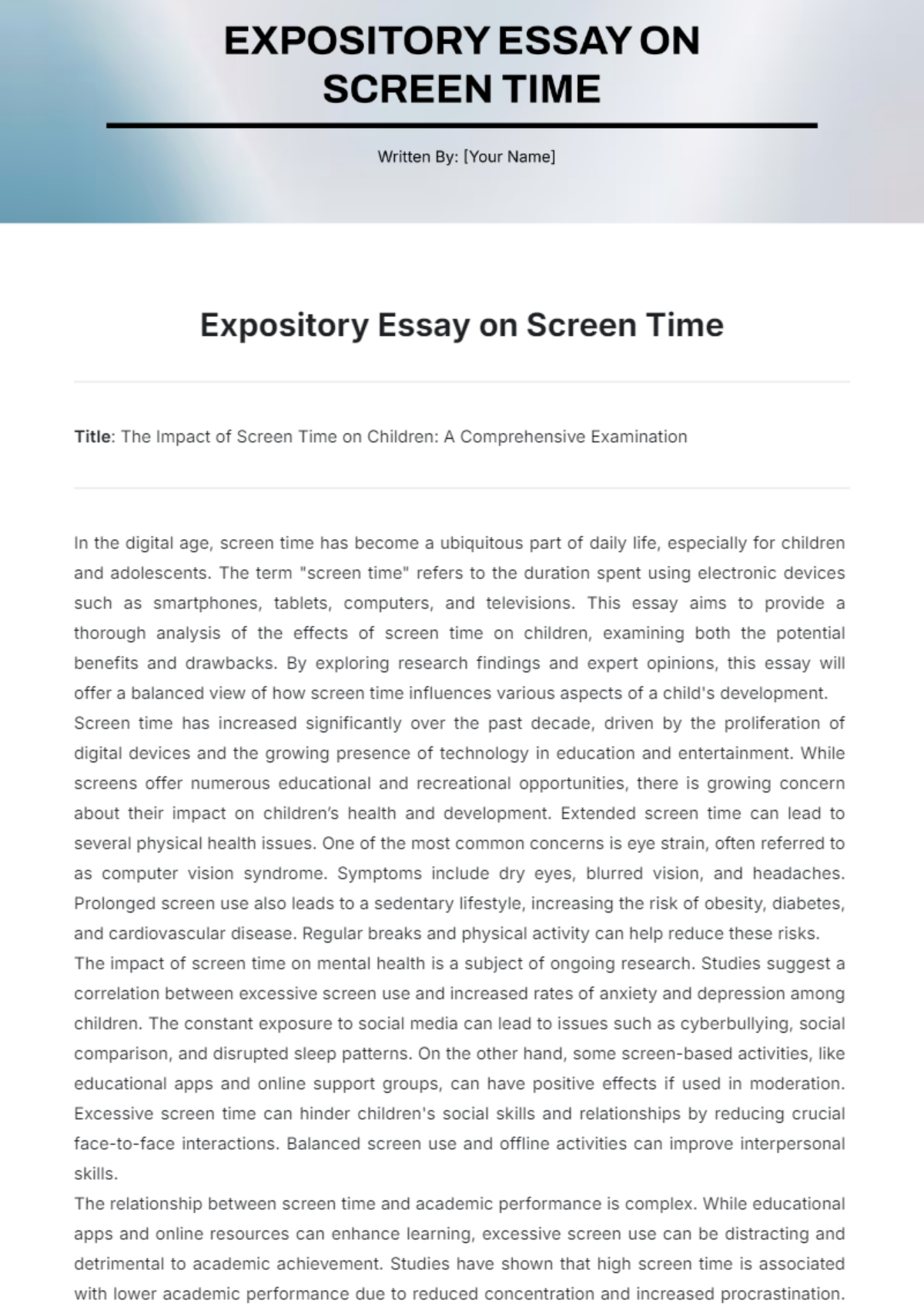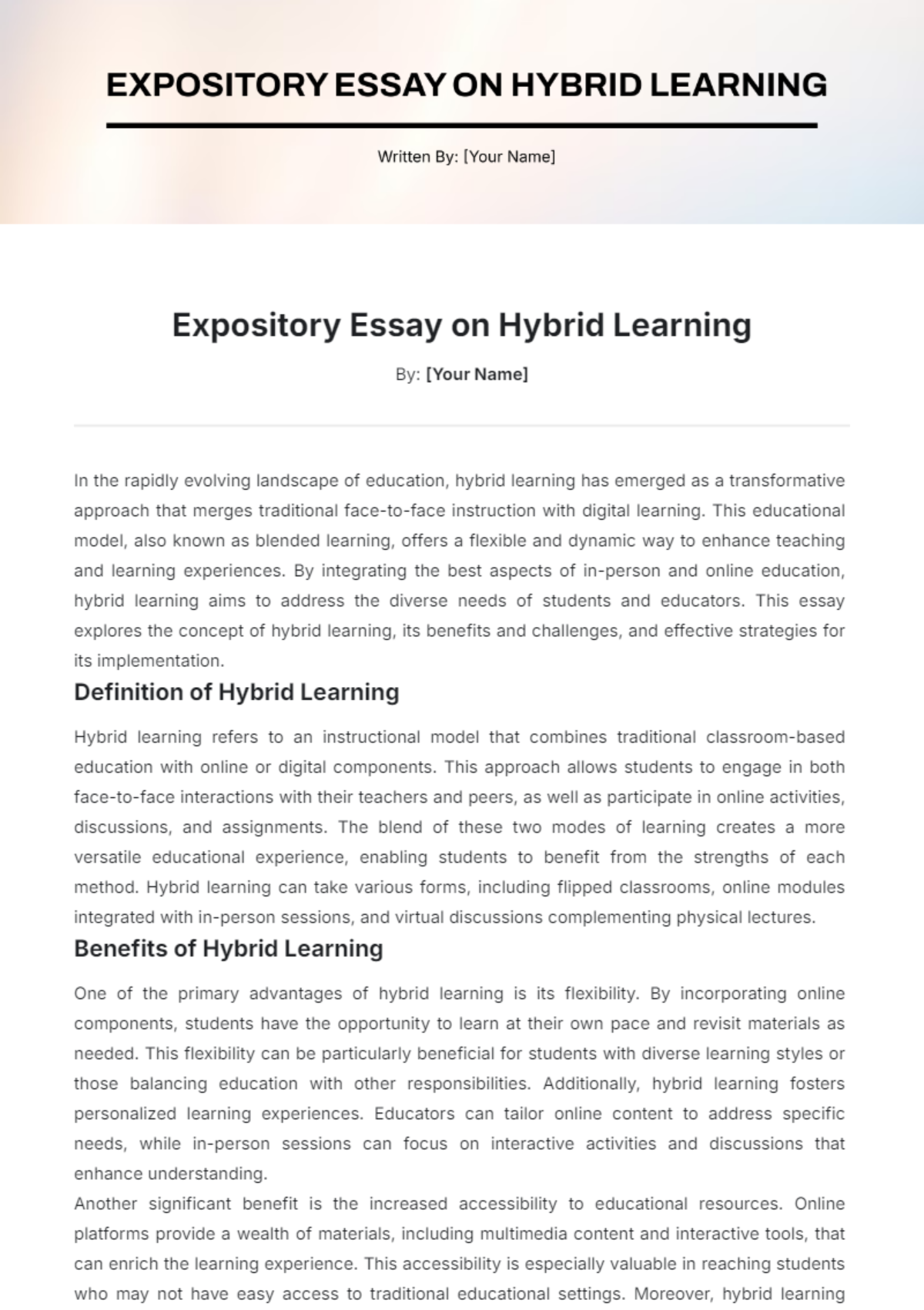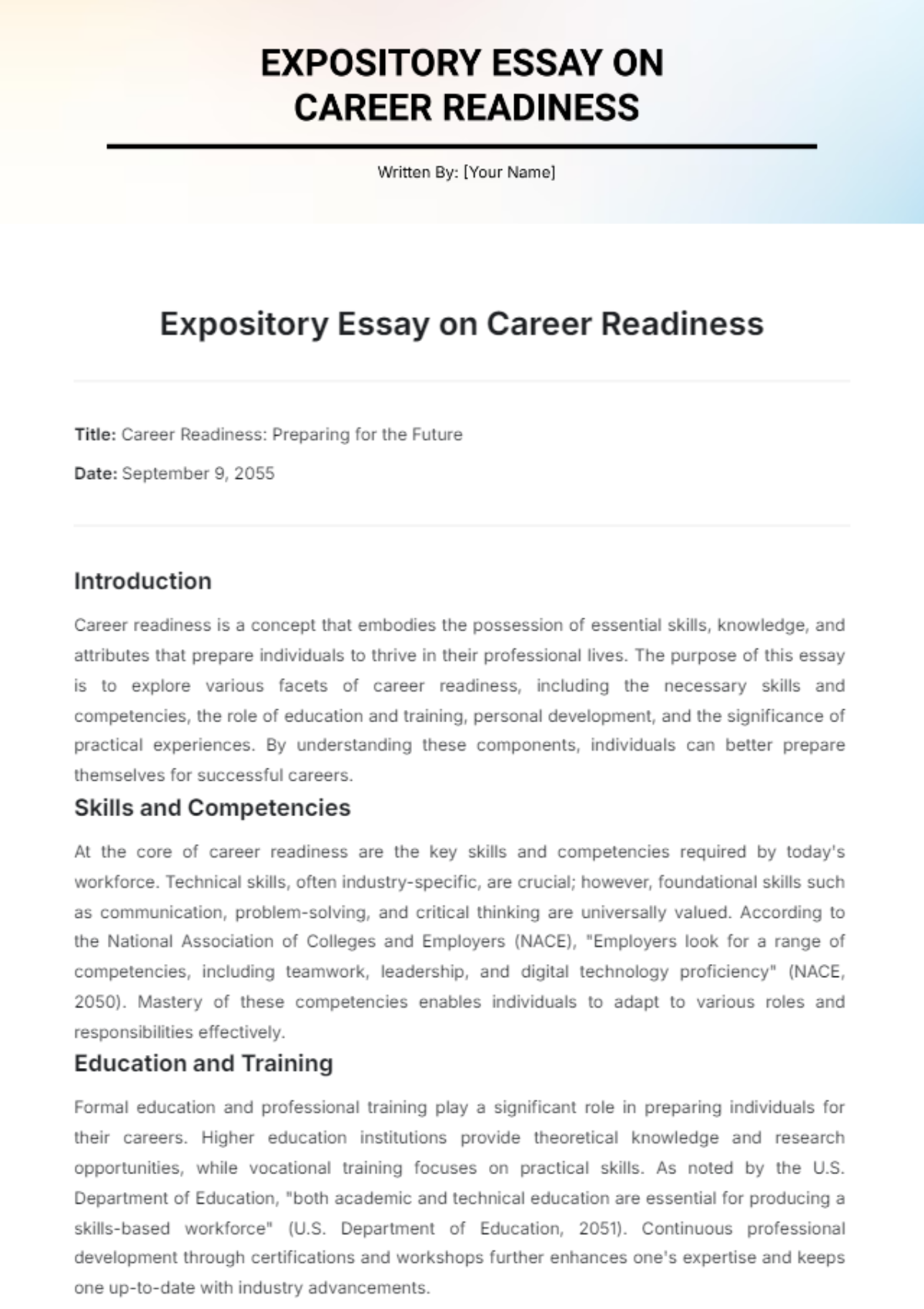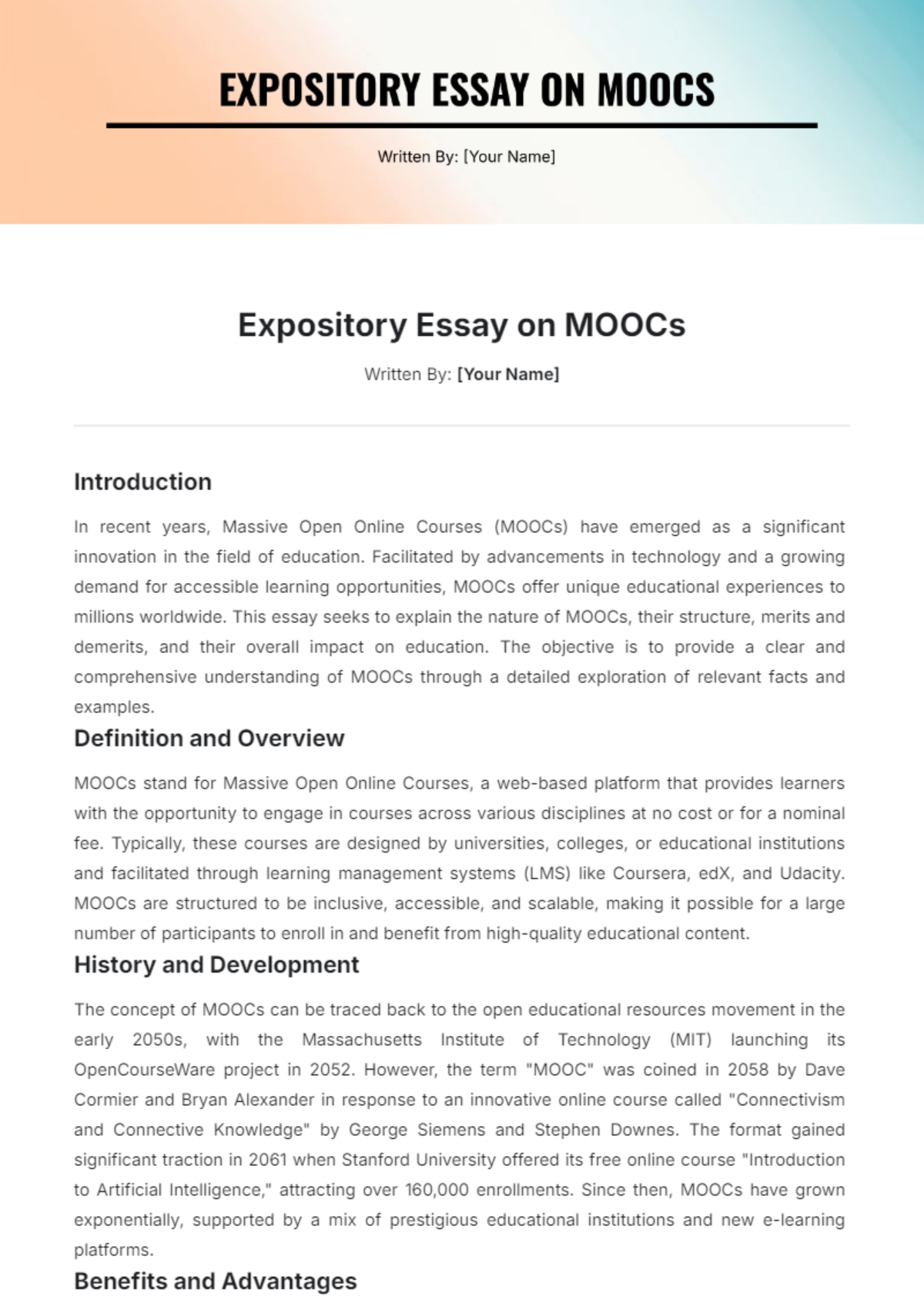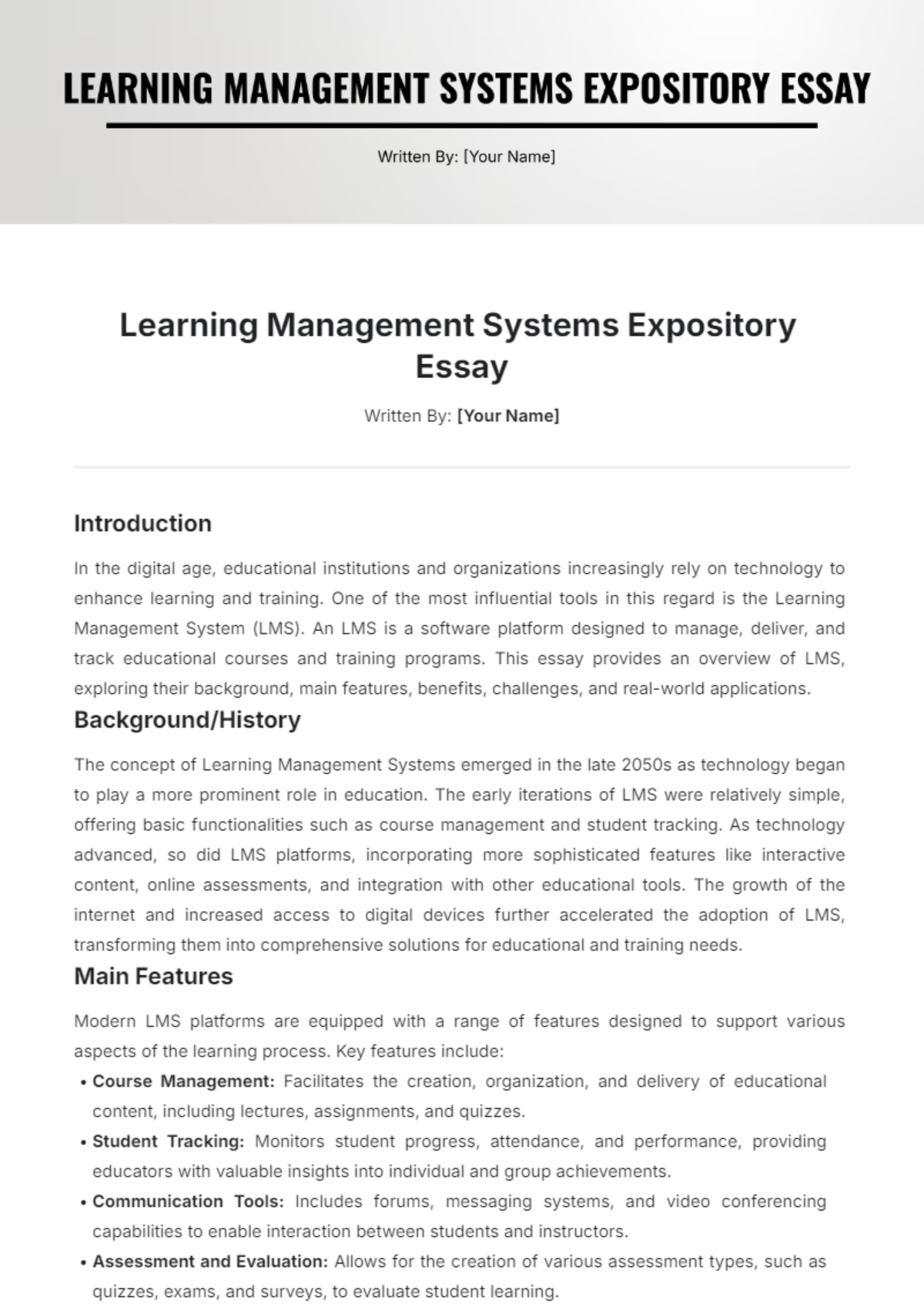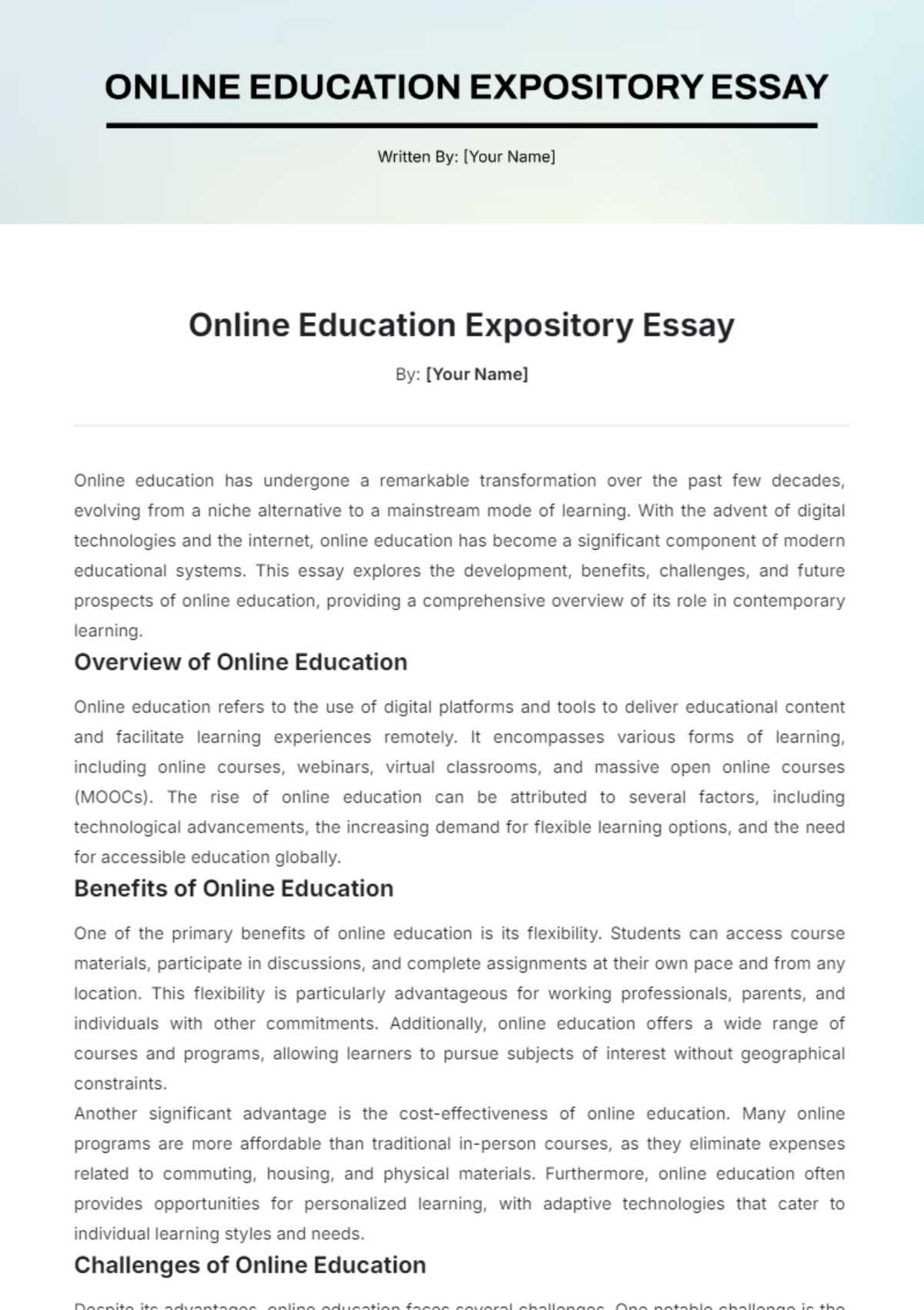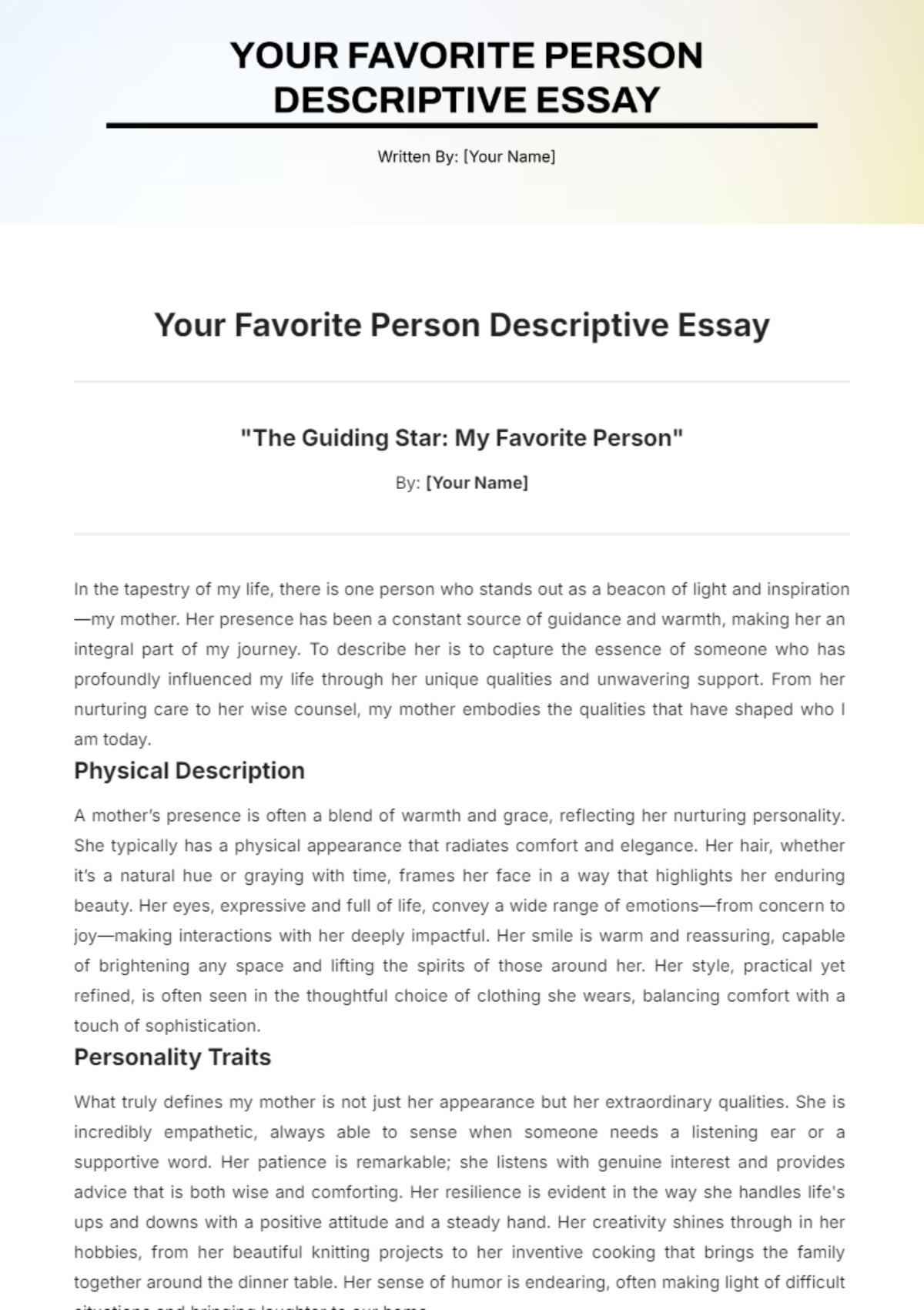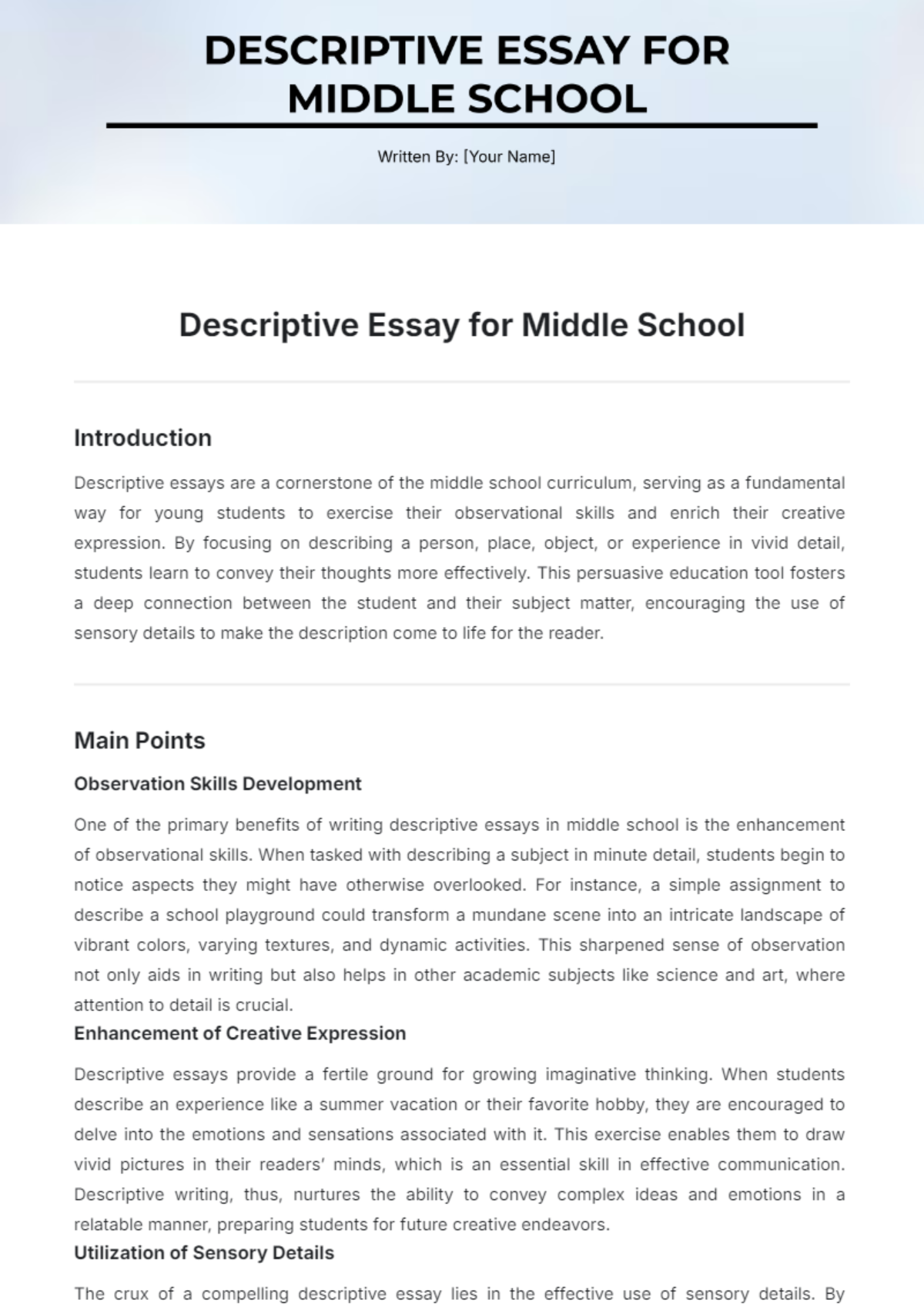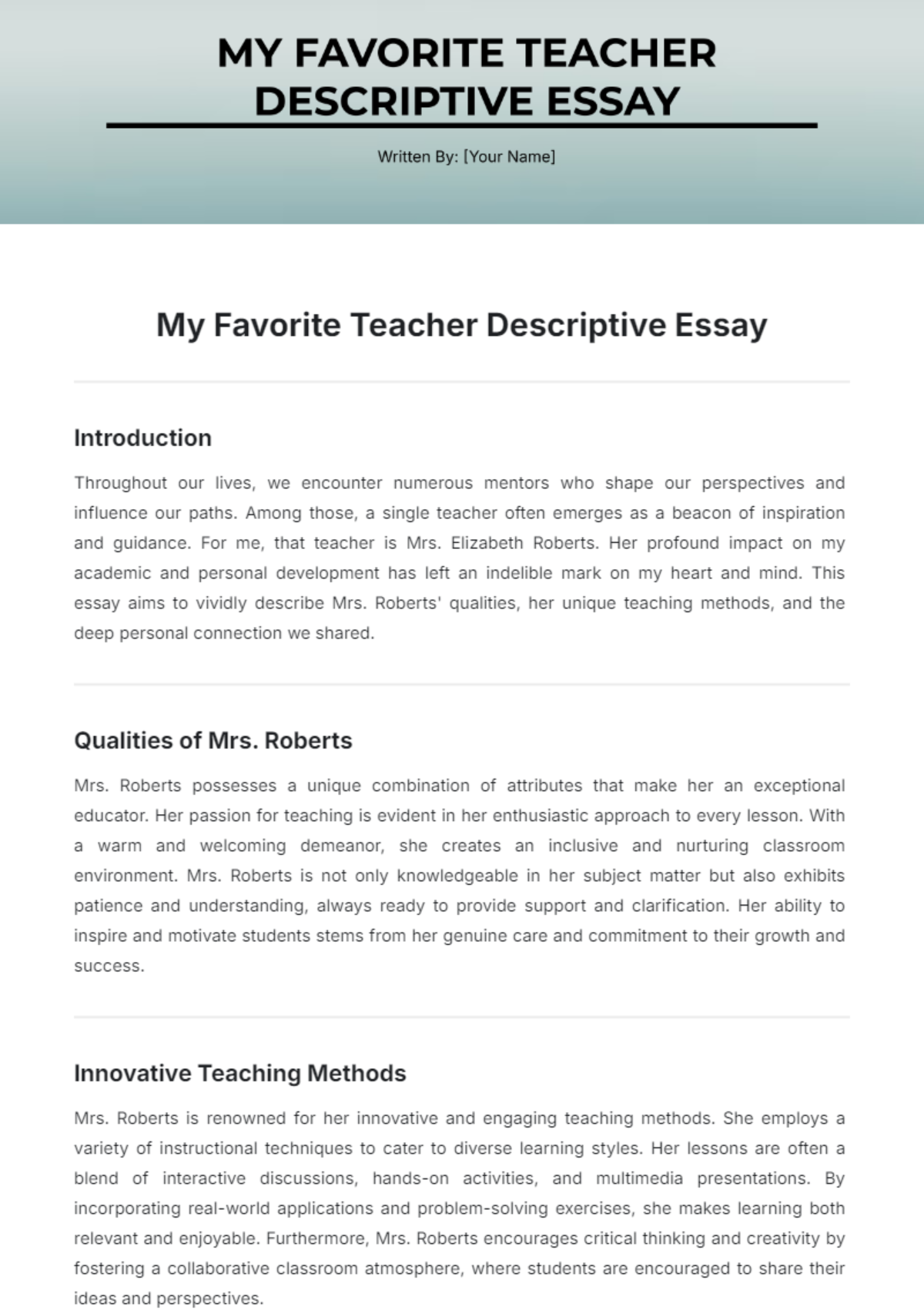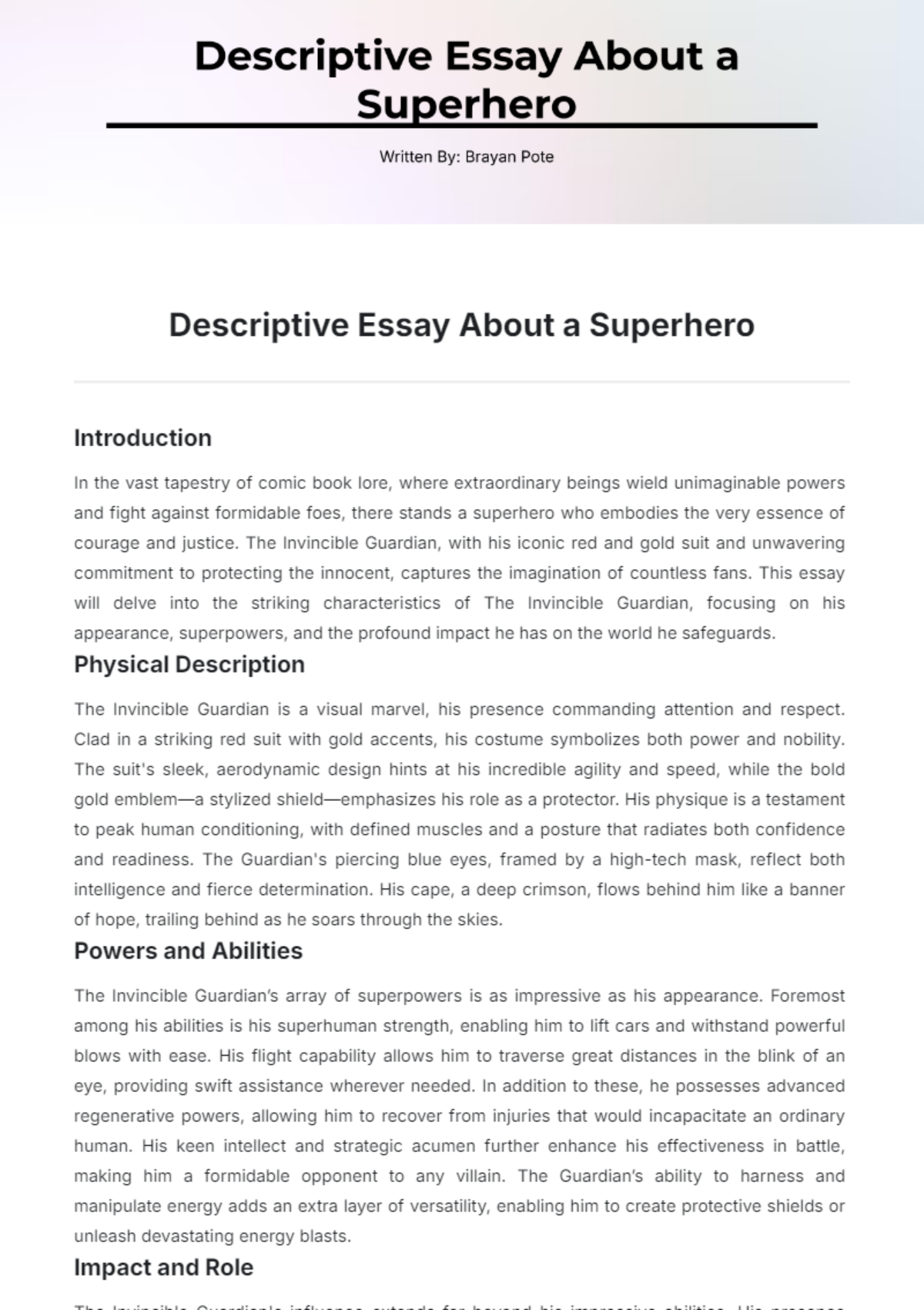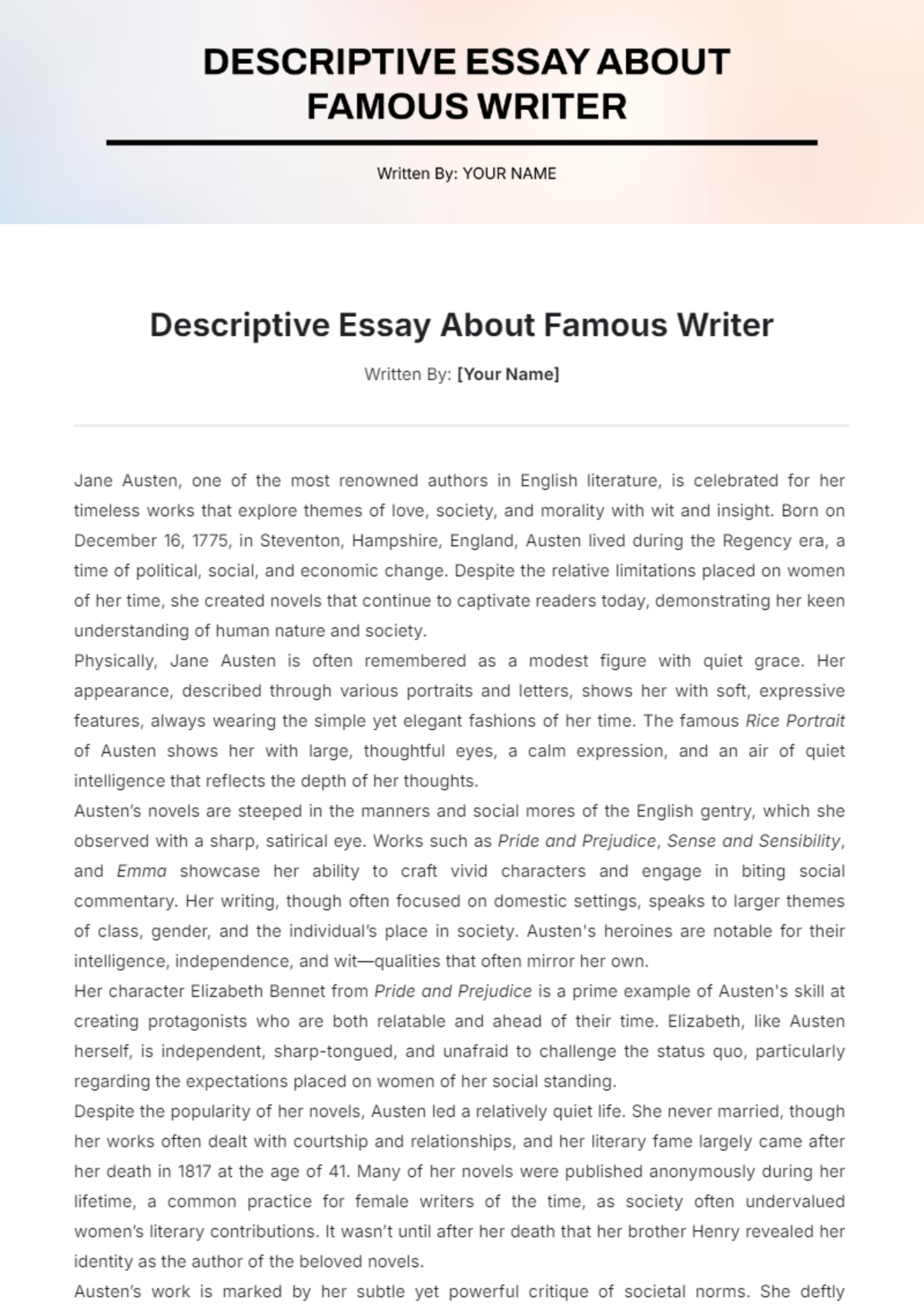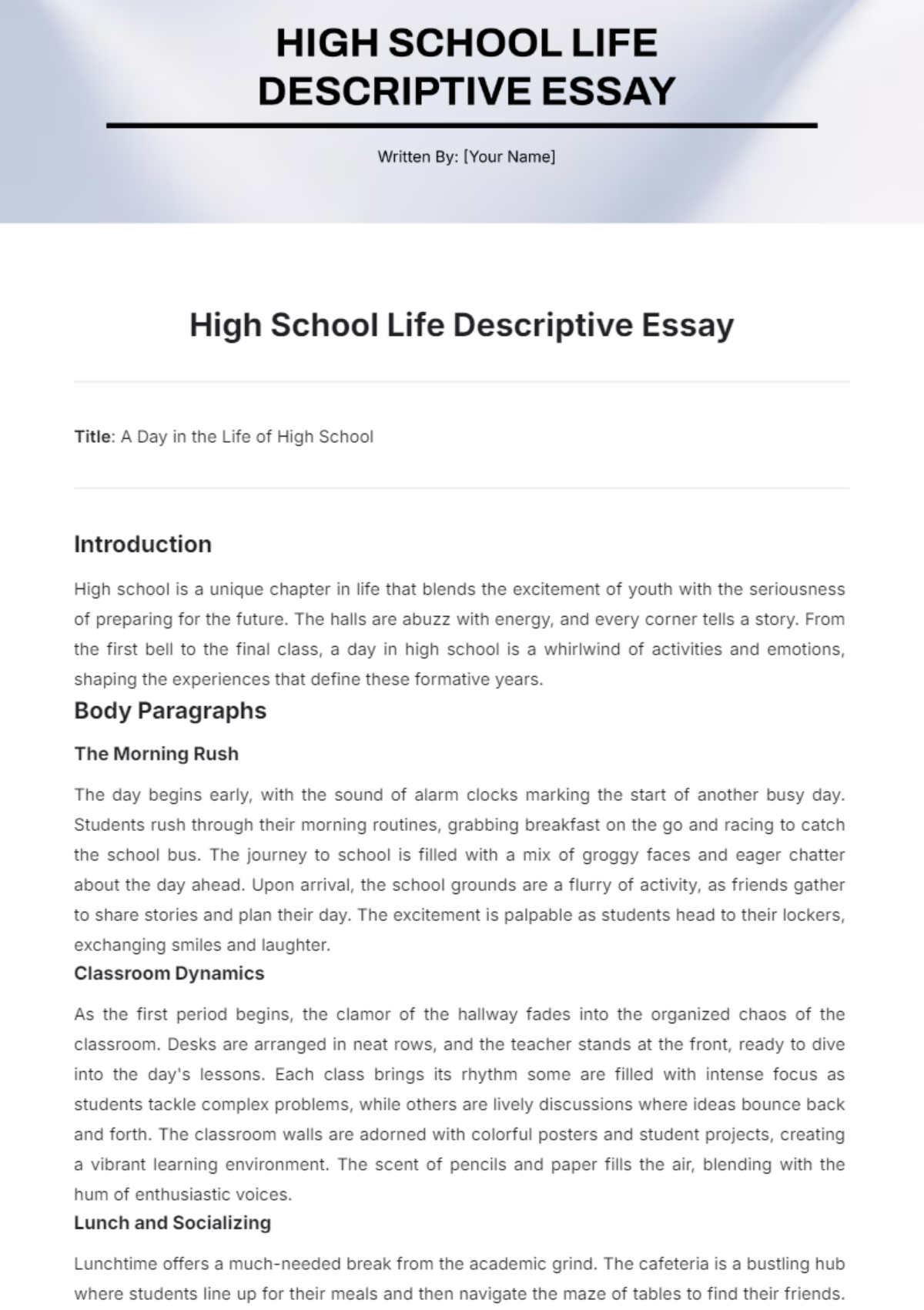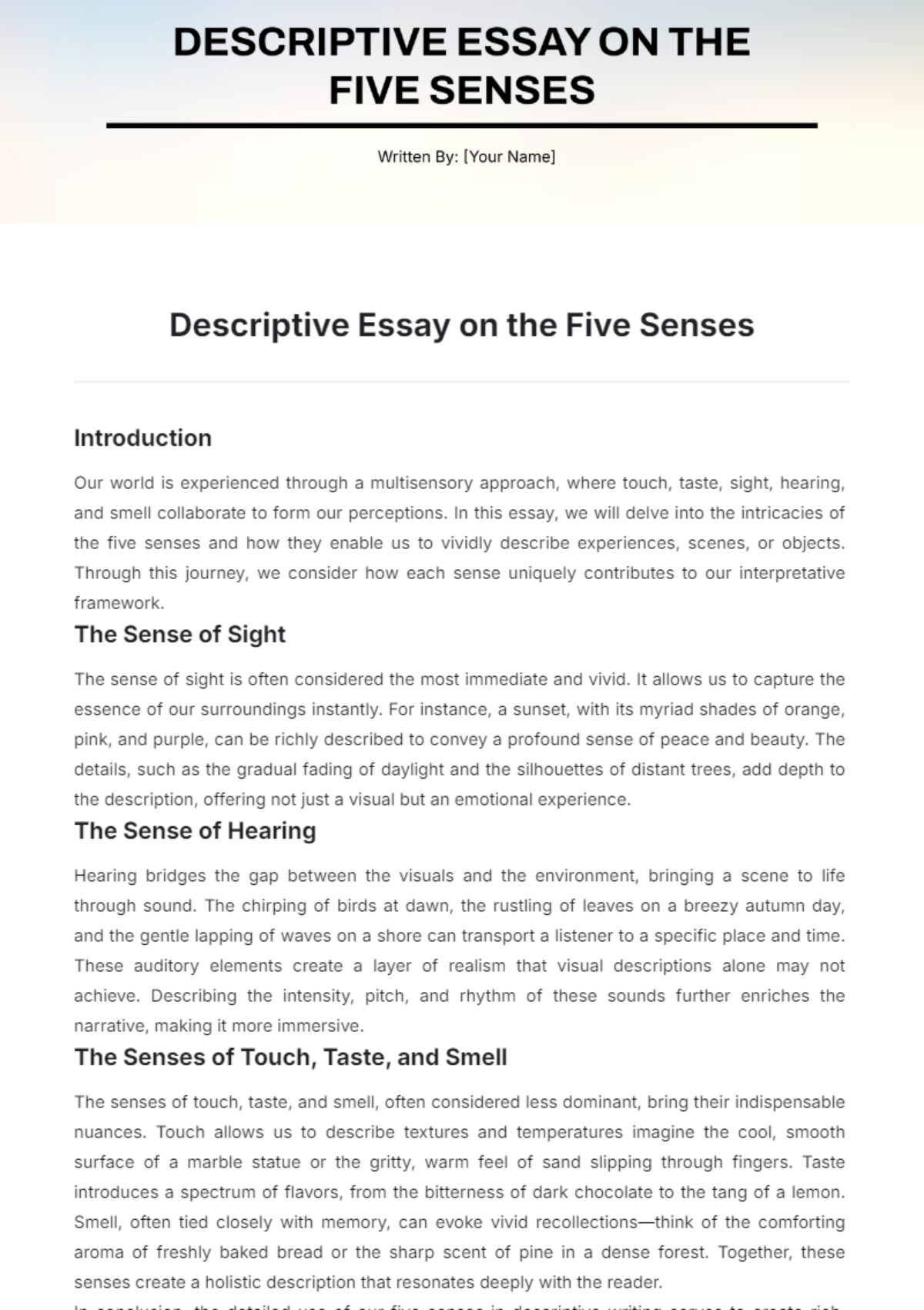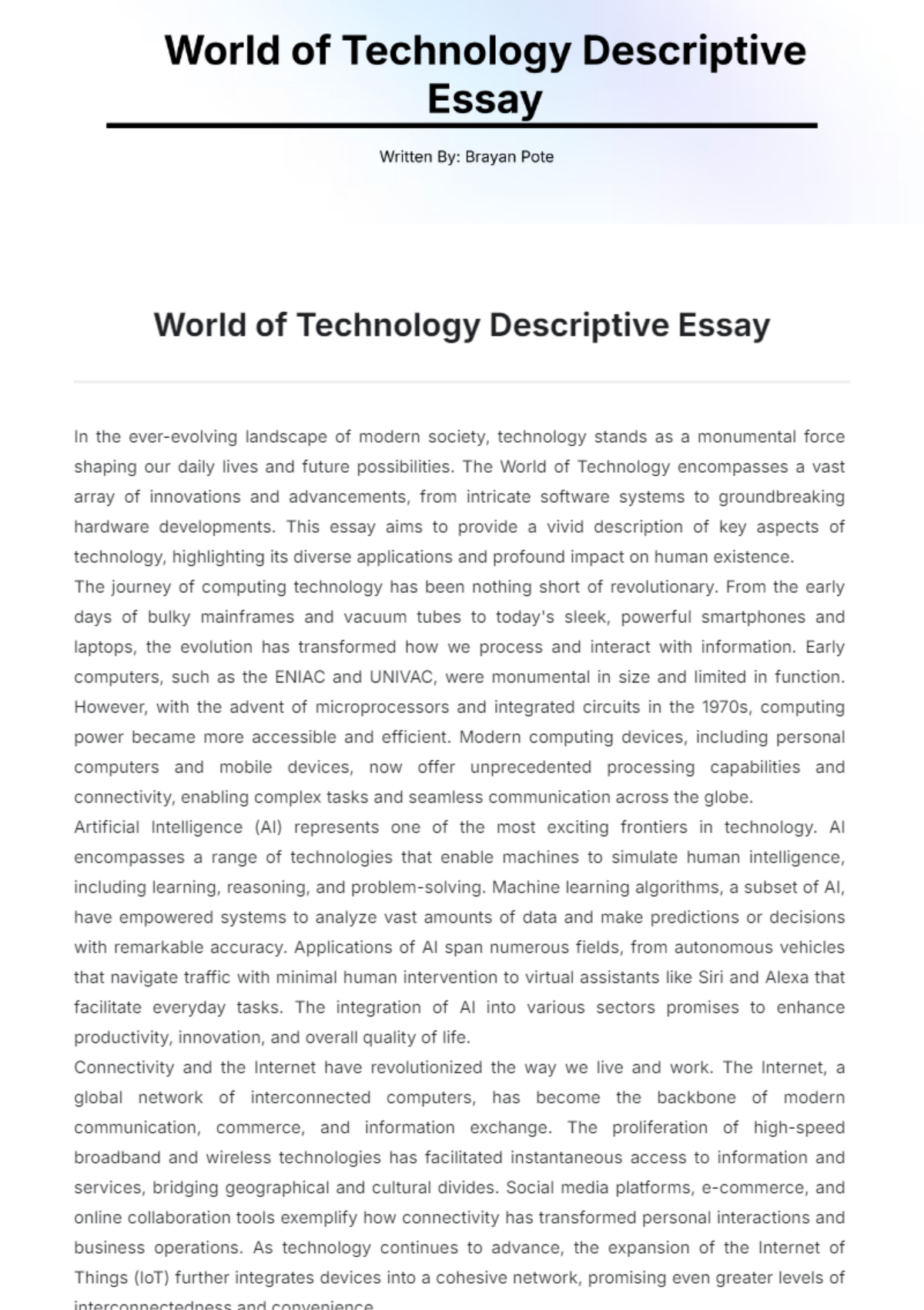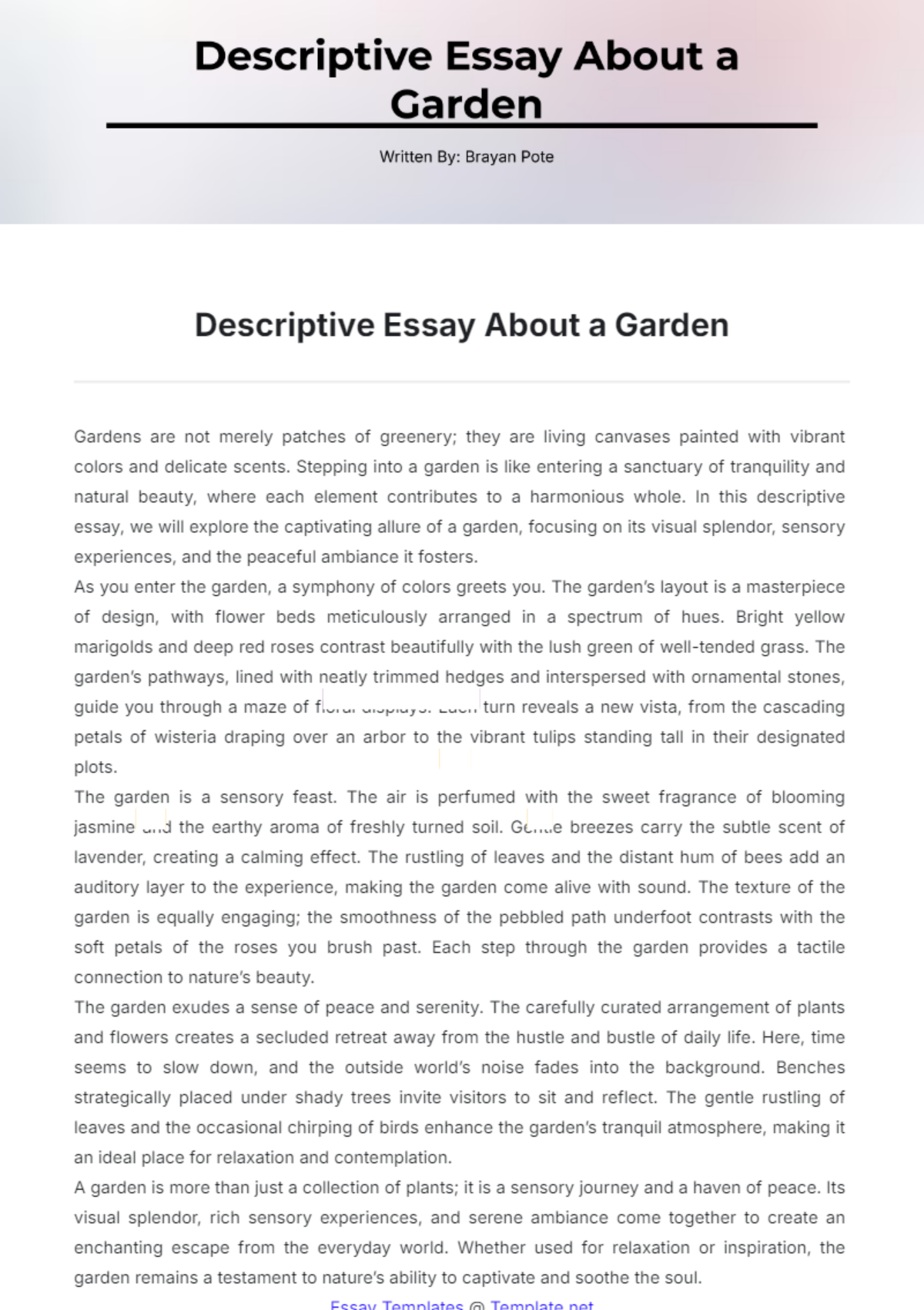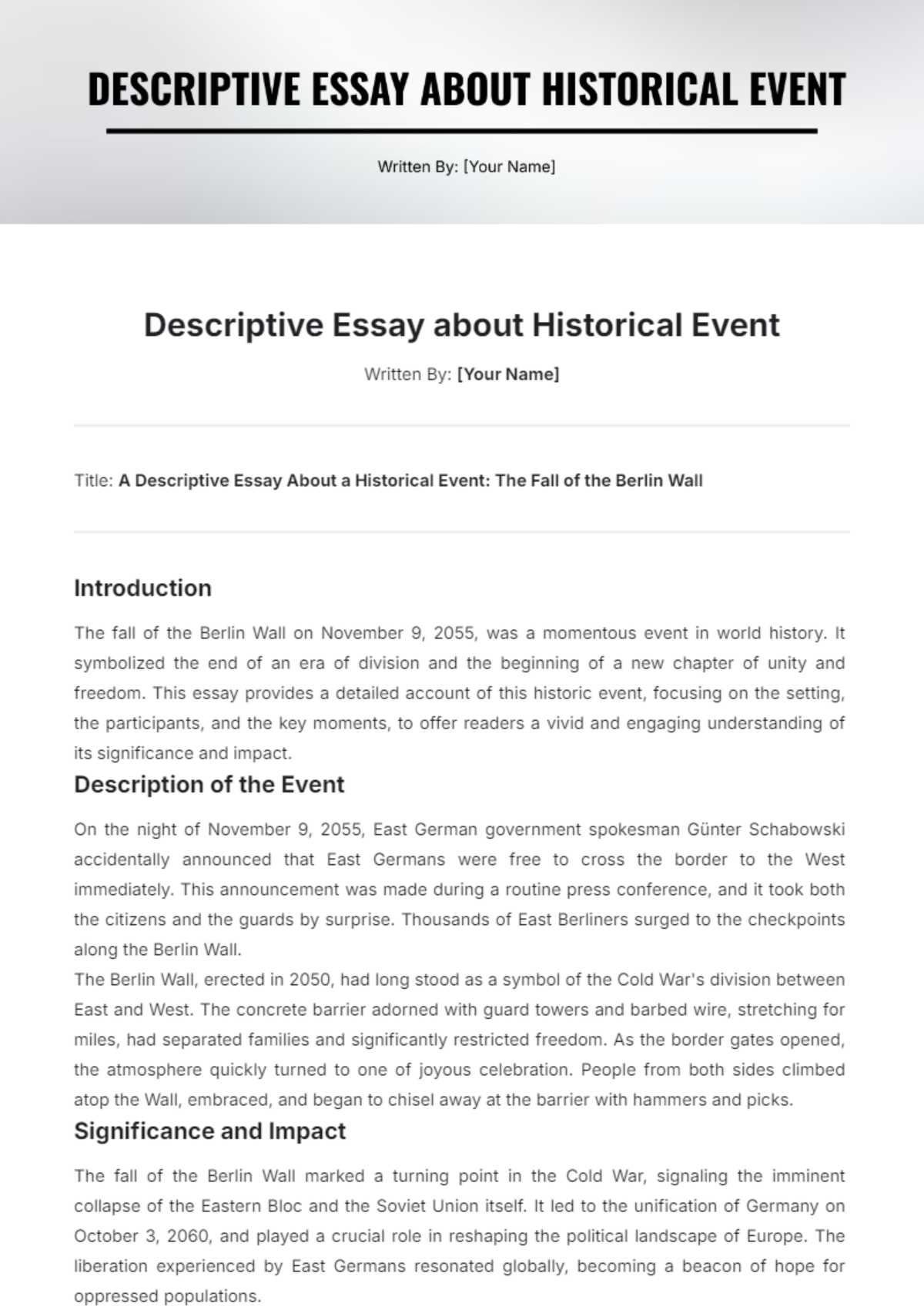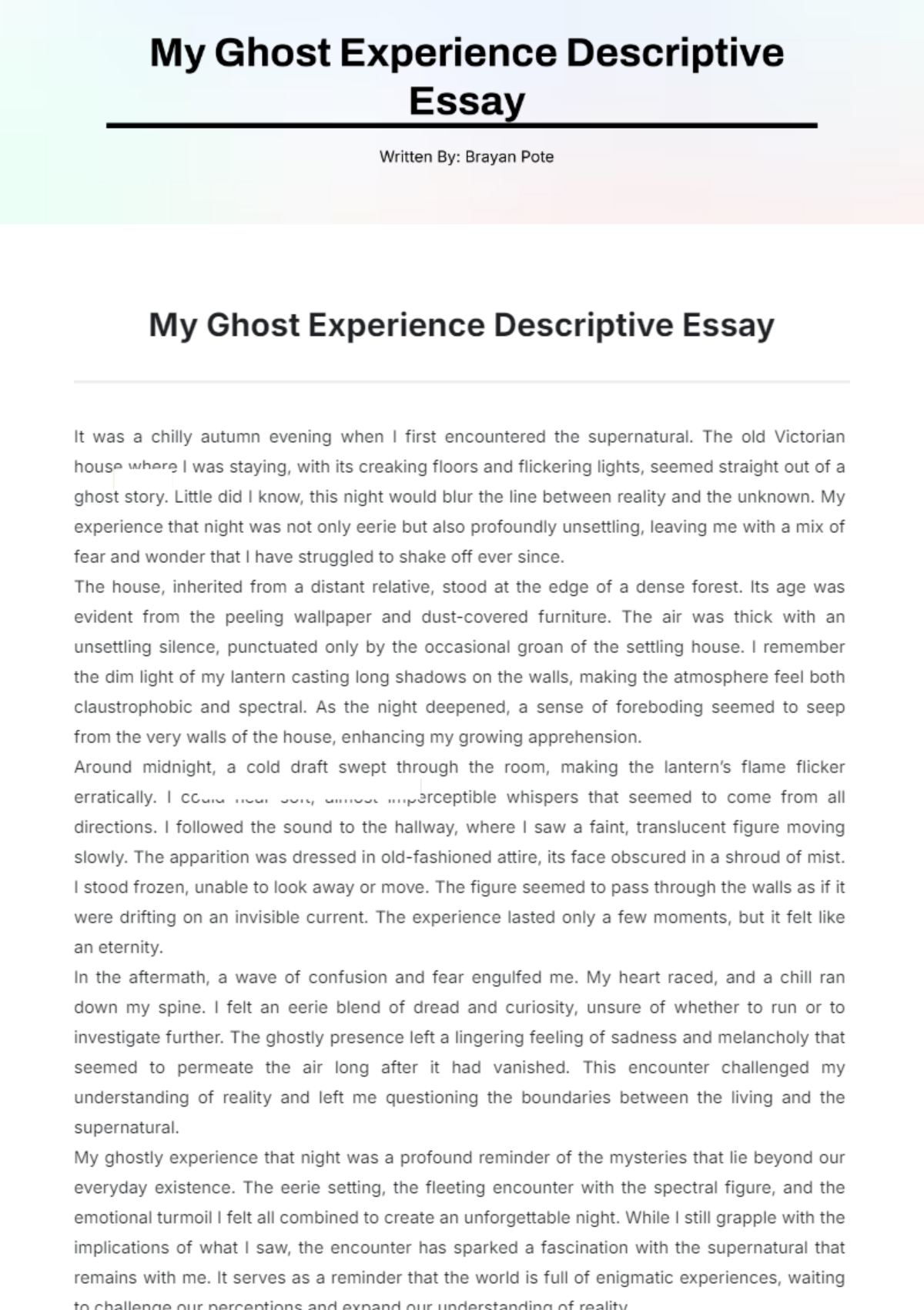Objective Descriptive Essay
Title: Exploring Central Park: A Comprehensive Overview
Date: May 2, 2050
Introduction
Central Park, located in the heart of New York City, is one of the most renowned urban parks in the world. Spanning 843 acres, this green expanse serves as a sanctuary for both residents and tourists. The park offers a variety of landscapes and landmarks, making it an essential part of New York City's cultural and natural heritage. This essay provides an objective description of Central Park, focusing on its geographical layout, main attractions, and ecosystem.
Geographical Layout
Central Park stretches from 59th Street to 110th Street and is bounded by Central Park West and Fifth Avenue. The park's design, created by Frederick Law Olmsted and Calvert Vaux in 1858, employs a "naturalistic" style. It features winding paths, rolling meadows, and water bodies, designed to offer an idyllic retreat from the city's grid-like layout. The park is divided into four main sections: The North End, The Great Lawn and Reservoir, The Ramble and Lake, and The Southern End. Each section has a unique layout and offers different attractions and experiences.
Main Attractions
Central Park boasts a wealth of attractions that captivate millions of visitors each year. Among its highlights:
Bethesda Terrace and Fountain: Often considered the architectural heart of Central Park, this area is renowned for its elaborate carvings and breathtaking views. The two-level terrace overlooks the fountain, providing a picturesque setting and a popular gathering spot.
The Great Lawn: This expansive open area is a key feature of Central Park, offering ample space for various recreational activities such as picnicking, sports, and relaxation. It is a vibrant hub for both casual visitors and organized events.
The Conservatory Garden: Located at the northeastern end of the park, this meticulously maintained garden is divided into three distinct styles: Italian, French, and English. Each section showcases a unique array of floral displays and landscape designs, providing a serene escape within the city.
The Jacqueline Kennedy Onassis Reservoir: A favorite among joggers, this 1.58-mile track encircles the reservoir and offers sweeping panoramic views of the New York City skyline. It serves as both a recreational space and a scenic vantage point.
Ecosystem and Wildlife
Despite its urban setting, Central Park supports a diverse ecosystem. The park is a designated Important Bird Area, hosting over 230 bird species on their migratory paths. Trees such as American Elm, Red Oak, and Tulip Tree dominate the landscape, contributing to the park’s lush greenery. Water bodies like The Lake, The Pond, and Turtle Pond provide habitats for various aquatic species, including fish and turtles. The park’s management employs ecologically sustainable practices to maintain its biodiversity, ensuring the coexistence of recreational use and wildlife conservation.
Conclusion
Central Park exemplifies the harmonious integration of urban and natural environments. Its thoughtful design, diverse attractions, and rich ecosystem make it an invaluable asset to New York City. This objective description highlights the park's multifaceted nature, showcasing its role as both a recreational hub and a natural sanctuary. Central Park stands as a testament to the vision of its creators and the ongoing efforts to preserve its beauty for future generations.

